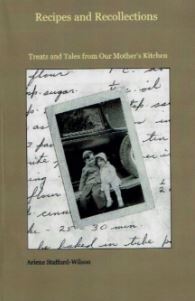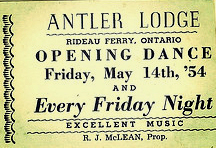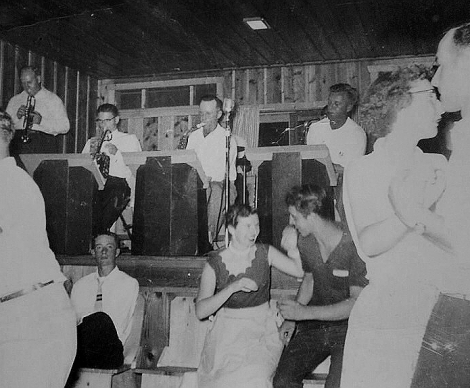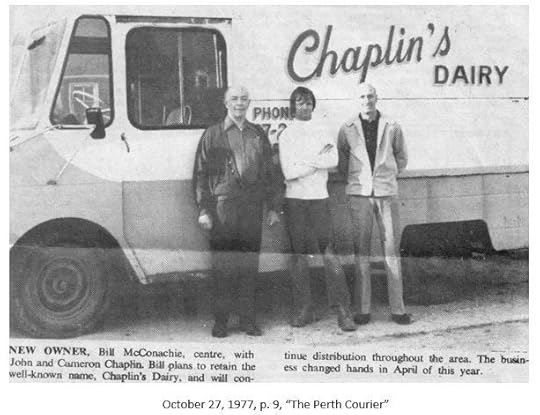Arlene Stafford-Wilson's Blog, page 9
July 4, 2024
Ferguson’s Falls & The Stumble Inn
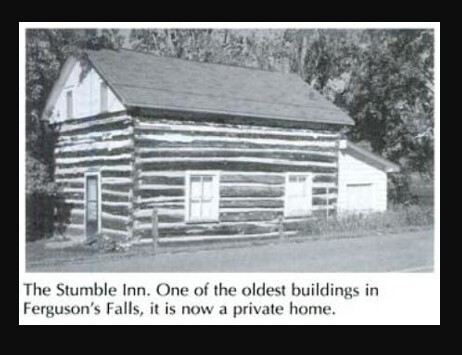 Photo: “A History of Drummond Township”, by John Ebbs, 1999, p. 21.
Photo: “A History of Drummond Township”, by John Ebbs, 1999, p. 21.Stumble Inn of Ferguson Falls
“It was a little shack very close to the old Mississippi, just across the bridge, coming down from the church; probably not room for more than twelve Irishmen at a time, if they could get along, and if that didn’t work, some would be out in yard ,or in the river.”
Thomas Joseph Stafford (1921-2018)
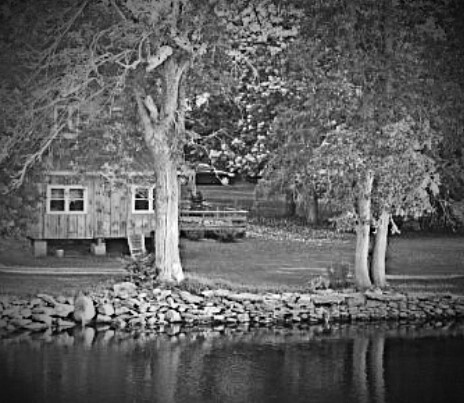 A view of the Stumble Inn from the Mississippi River
A view of the Stumble Inn from the Mississippi River“The Stumble Inn was operated by Billy McCaffrey. He was a very, very, short man, with a curved back. His tavern was located right beside the river, when you crossed the old bridge, across the Mississippi River, coming down from the Catholic church. I remember it around 1927 to early 1930s. The horses were stabled across the road in an open shed at Charles Hollinger’s, the auctioneer. We walked across the bridge up to church for mass. After mass the Catholic brethren would stop in at the Stumble Inn. You could get a shot of something for the trip home. There was also a lot of Poker played there, which was frowned on in the community. There were also lots of ghost stories told there.”
quote from 2012 by Thomas Stafford (1921-2018)
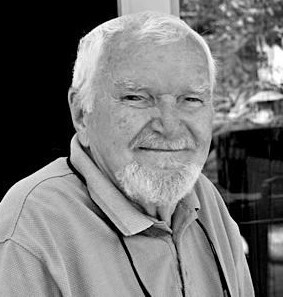 Thomas Stafford, son of Thomas Patrick Stafford and Margaret Doyle Stafford
Thomas Stafford, son of Thomas Patrick Stafford and Margaret Doyle Stafford“There would be music at the Stumble Inn. There was always music where the Irish gathered. I remember Jimmy (Richards) playing the fiddle. I spent quite a few days at Richards’ visiting with your dad ,Tib (Tobias Stafford). Clara (Richards Carberry) would feed us cookies. Jimmy thought we were a pain in the ass, I think. Peter (Stafford) was a great fisherman of mud pouts from the old Mississippi. In Ferguson Falls they were all related, either before or after they arrived in Canada from Wexford.”
(quote from Thomas ‘Tom’ Stafford 1921-2018)
(James ‘Jimmy’ Richards was Dad’s uncle on his Mother’s side. Clara Richards, Dad’s aunt, was Jimmy’s sister. Clara Richards married Thomas ‘Tom’ Carberry, a descendant of one of the ‘Seven Irish Bachelors’ of Ferguson Falls. The Richards homestead was next door to the Stafford homestead on the 11th concession of Drummond Township. Dad’s parents – Anastasia ‘Stacy’ Richards married Michael Vincent ‘Vince’ Stafford – the boy next door) Peter Stafford was Dad’s brother) ‘Wexford’ refers to County Wexford, Ireland. Jimmy Richards played his fiddle at the Stumble Inn on a regular basis. His fiddle was passed down to Dad, then to me.)
Billy McCaffrey, owner of The Stumble Inn
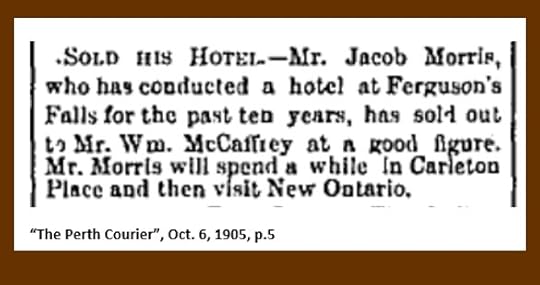
William Henry ‘Billy’ McCaffrey, (1869-1940), was the son of Joseph McCaffrey, and Ellen McGarry McCaffrey. Billy’s ancestor, Thomas McCaffrey was the first settler and resident of the village of Ferguson Falls, arriving in 1815.
Billy’s mother, Ellen McGarry McCaffrey:
 Ellen McGarry McCaffrey 1837-1917
Ellen McGarry McCaffrey 1837-1917Ellen McGarry McCaffrey and her husband, Joseph McCaffrey had ten children:
Mary McCaffrey 1861-1944 – was a tailorJulia Ann McCaffrey 1863-1944Thomas McCaffrey 1866-1913. Thomas married Margaret Doyle and they lived on the McCaffrey homestead on the 8th concession of Drummond Township. Thomas died age 46 of tuberculosisPeter McCaffrey 1867-1895 – died age 28 of dropsyWm. Billy McCaffrey 1868-1940 – saddler by trade, owned a hotel in Ferguson Falls, and later, owned the Stumble InnMargaret McCaffrey 1874-1917 died age 43 of pernicious anemiaLoretta McCaffrey 1872-1941 was a dressmakerGertrude McCaffrey 1875-1918 died age 38 of pernicious anemiaJosephine McCaffrey 1877-1931 trained as a nurse and worked in New York, died age 52 of cerebral hemorrhageTeresa McCaffrey 1879-1935, married Martin Sylvester Grace. Their children: Harold Francis Grace, Ursula Grace Kehoe Bent, Helen Grace Butterworth, Kathryn Grace Daley, and Reverend Sister Anna Gertrude.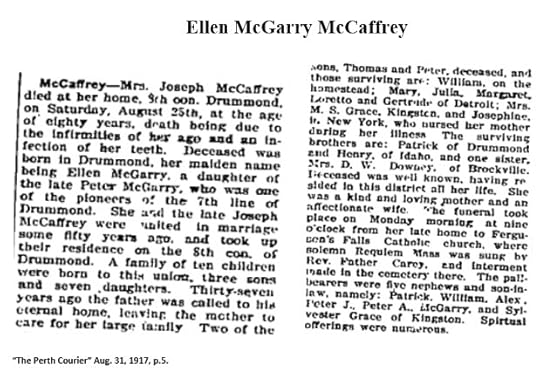 Ellen McGarry McCaffrey, daughter of Peter McGarry, niece of pioneers Elizabeth McGarry Stafford and Tobias Stafford
Ellen McGarry McCaffrey, daughter of Peter McGarry, niece of pioneers Elizabeth McGarry Stafford and Tobias StaffordAfter operating his successful and much-loved community gathering spot, the Stumble Inn, Billy passed away in 1940.
“The late Mr. McCaffrey was a man of sterling qualities, and possessed the good-will and esteem of all who knew him.”
 Billy McCaffrey’s obituary from “The Perth Courier” Aug. 2, 1940, p.3
Billy McCaffrey’s obituary from “The Perth Courier” Aug. 2, 1940, p.3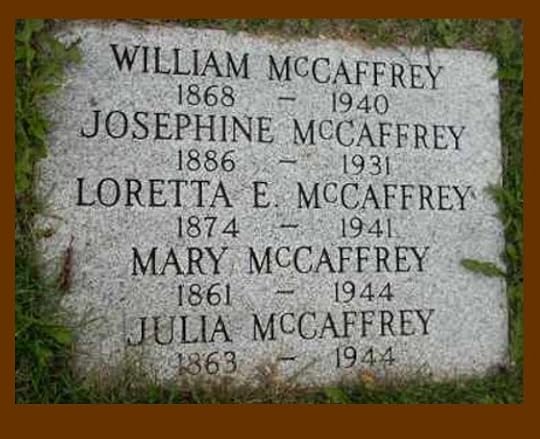 Billy’s and some of his siblings, St. Patrick’s cemetery, Ferguson Falls
Billy’s and some of his siblings, St. Patrick’s cemetery, Ferguson FallsFerguson Falls
(sometimes written as Ferguson’s Falls, or Fergusons Falls, depending on the era)
Originally known as Milford, Fergusons Falls was renamed in honor of the early settler Captain Ferguson when a post office was established there. This was the closest village to the Stafford farm and was a source for supplies, postal services, blacksmith services, social activities, and later St. Patrick’s Church.
Thomas McCaffrey was the first settler coming in 1815. McCaffrey was a close friend of Tobias Stafford and Betsy (McGarry) Stafford. Thomas was one of the witnesses to their marriage ceremony in St. John’s Church in Perth. He also signed his name as witness to one of Tobias’ later land transactions, and was present at the baptisms of some of the Stafford children.
Other early Ferguson Falls residents were John and Patrick Quinn, Patrick and Martin Doyle, James Carberry, James Power and William Scanlon. Two Stafford girls married into the Quinn family. The Hollinger family was also among the first settlers. By 1857, Ferguson Falls was booming. John Doyle was the Innkeeper, James McCaffrey was listed in the business directory as a Wagon Maker, and John & Michael McCaffrey were the local Blacksmiths. John Stafford, Tobias Stafford and Elizabeth McGarry’s son, was the area Shoemaker, and would later open a shoe store in Almonte, then in Perth. There was also a saw-mill, and a grist mill owned by Robert Blair and a hotel owned by Charles Hollinger.
Some history of Ferguson Falls:
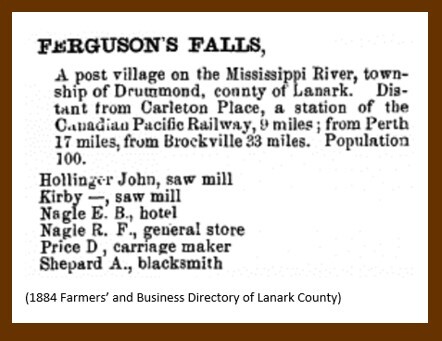 1884 Farmers’ and Business Directory
1884 Farmers’ and Business Directory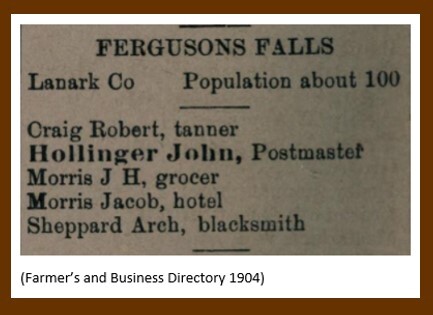 1904 Business Directory for Lanark County
1904 Business Directory for Lanark County 1916 Farmers’ and Business Directory for Lanark County
1916 Farmers’ and Business Directory for Lanark CountyA note on the local school:
“In 1894 Miss Mary Stafford taught, and then in 1901-1909 Miss Maggie Doyle of Drummond Twp (who later married Thomas Patrick Stafford).
In 1901 the teacher’s salary was $240.00 dollars a year. In 1905 it was $250.00. 1943-1946 Miss Mary Phelan of Lanark was the teacher. Her salary was $1000.00 a year and she had 9 pupils.”
(quote from Gail McFarlane, taken from the Tweedsmuir history of Ferguson Falls)
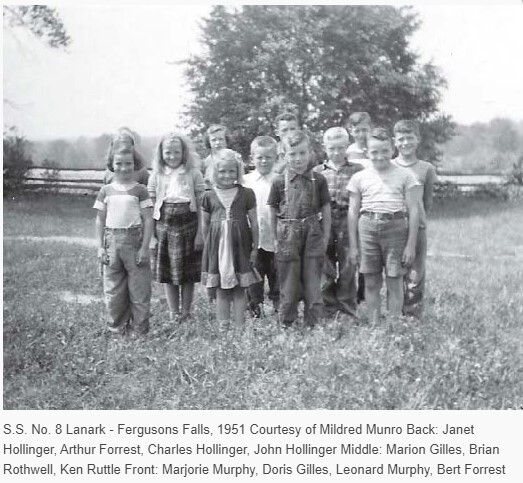
 S.S. # 15 Drummond Township School, class of 1928-29, with our cousins, Thomas ‘Tom’ Stafford (1921-2018) , Patricia ‘Pat’ Stafford, and Nora Stafford, (children of Thomas Patrick Stafford and Margaret ‘Maggie’ Doyle Stafford) Original photo at the Lanark Museum.
S.S. # 15 Drummond Township School, class of 1928-29, with our cousins, Thomas ‘Tom’ Stafford (1921-2018) , Patricia ‘Pat’ Stafford, and Nora Stafford, (children of Thomas Patrick Stafford and Margaret ‘Maggie’ Doyle Stafford) Original photo at the Lanark Museum.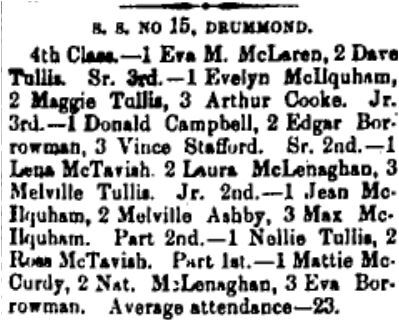
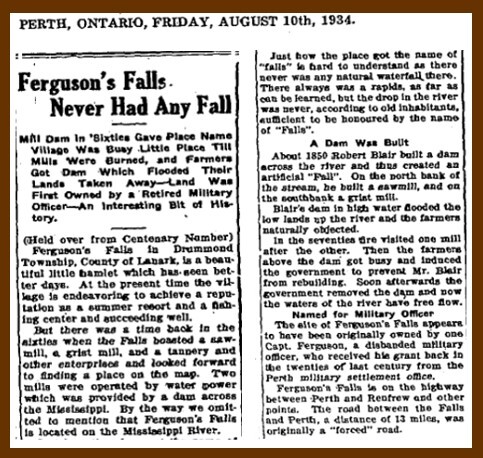 “The Perth Courier”, August 10, 1934 part 1 of 3
“The Perth Courier”, August 10, 1934 part 1 of 3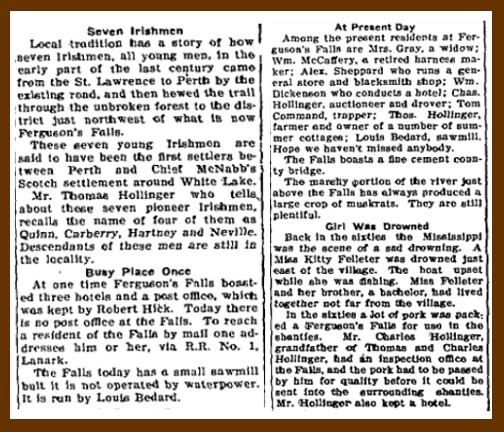 “The Perth Courier”, August 10, 1934 part 2 of 3
“The Perth Courier”, August 10, 1934 part 2 of 3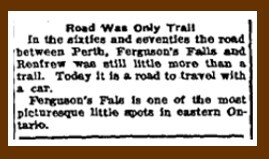 “The Perth Courier”, August 10, 1934 part 3 of 3
“The Perth Courier”, August 10, 1934 part 3 of 3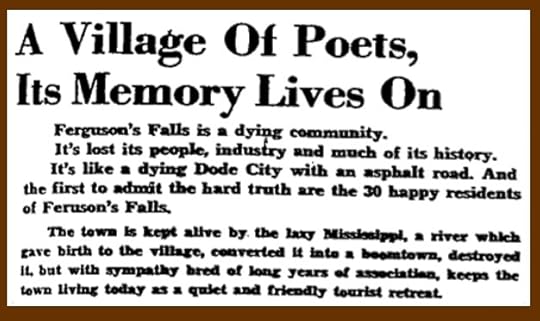 “The Perth Courier” Sept. 13, 1962, p.3
“The Perth Courier” Sept. 13, 1962, p.3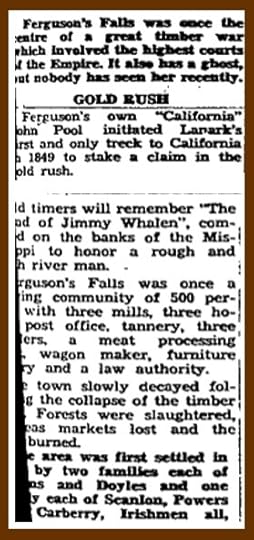 “The Perth Courier” Sept. 13, 1962, p.3
“The Perth Courier” Sept. 13, 1962, p.3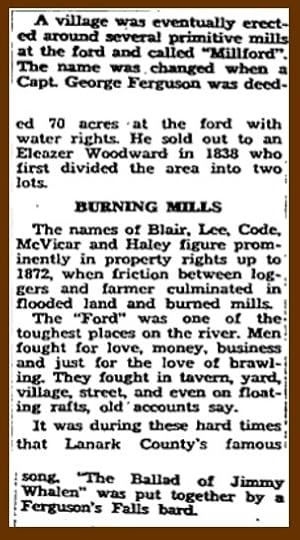 “The Perth Courier” Sept. 13, 1962
“The Perth Courier” Sept. 13, 1962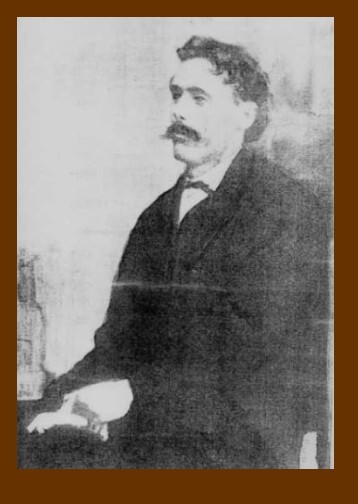 James ‘Jimmy’ Phelan (pronounced Whelan) Local lore says his lost love wanders in Ferguson Falls, along the Mississippi River at night, searching for Jimmy. The Phelan farm backed directly onto the Stafford homestead on the 11th concession of Drummond Township. Tim Doyle of Lanark village is said to have written the song.
James ‘Jimmy’ Phelan (pronounced Whelan) Local lore says his lost love wanders in Ferguson Falls, along the Mississippi River at night, searching for Jimmy. The Phelan farm backed directly onto the Stafford homestead on the 11th concession of Drummond Township. Tim Doyle of Lanark village is said to have written the song.Ballad of Jimmy Whelan
All alone as I strayed by the banks of the river
Watching the moonbeams as evening drew nigh
All alone as I rambled, I spied a fair damsel
Weeping and wailing with many a sigh.
Weeping for one who is now lying lowly
Mourning for one who no mortal can save
As the foaming dark water flow gently about him
Onward they speed over young Jimmy’s grave.
She cries, “Oh, my darling, please come to me quickly
And give me fond kisses that oft-times you gave
You promised to meet me this evening, my darling
So now, lovely Jimmy, arise from your grave.”
Slowly he rose from the dark, stormy waters
A vision of beauty more fair than the sun
Saying “I have returned from the regions of glory
To be in your dear loving arms once again.”
“Oh, Jimmy, why can’t you tarry here with me
Not leave me alone, so distracted in pain.”
“Since death is the dagger that’s cut us asunder
Wide is the gulf, love, between you and I.”
“One fond embrace, love, and then I must leave you
One loving farewell, and then we must part.”
Cold were the arms that encircled about her
Cold was the body she pressed to her heart.
Slowly he rose from the banks of the river
Up to the heavens he then seemed to go
Leaving this fair maiden, weeping and mourning
Alone on the banks of the river below.
(local Irish legends told of the ‘gates of glass’, where one could pass between this world and the next, through the water of a lake or river, at dusk)
 “The Perth Courier” continued from article above
“The Perth Courier” continued from article above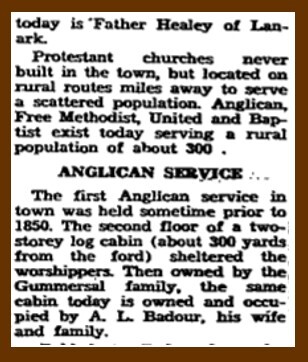 “Perth Courier” article – continued
“Perth Courier” article – continued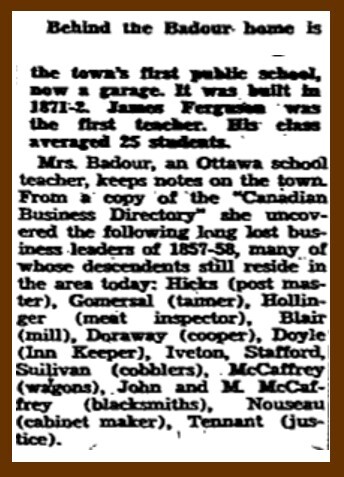 “Perth Courier” article continued
“Perth Courier” article continued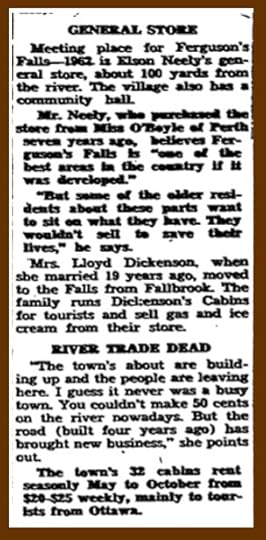 “The Perth Courier” – article continued
“The Perth Courier” – article continued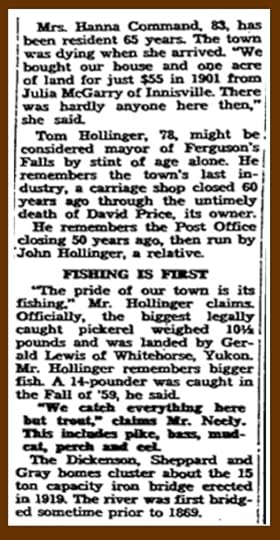 “The Perth Courier” – article continued
“The Perth Courier” – article continued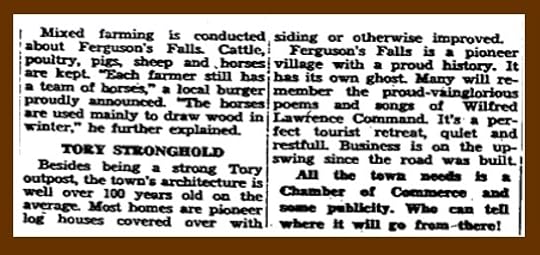 “The Perth Courier”, Sept. 13, 1962, p3, end of article
“The Perth Courier”, Sept. 13, 1962, p3, end of articleA Return to Our Roots in 2012
Archives Lanark celebrated their 10th Anniversary in October of 2012, at the Ferguson’s Falls Community Hall. There were local dignitaries from Drummond Township, and Doug Bell made a presentation of a 200 year old artifact, – an original settler’s trunk from pioneer Sutton Frizzell, and his land documents that were found in the trunk.
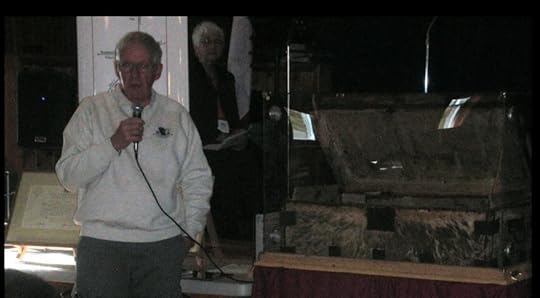 Sutton Frizell’s trunks presented by Doug Bell to Archives Lanark
Sutton Frizell’s trunks presented by Doug Bell to Archives Lanark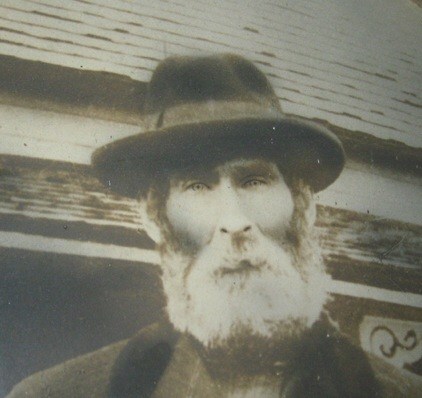 Sutton Frizell, one of the first elected Councillors in Drummond Township in 1850, along with Thomas McCaffrey, Murdock McDonald, Patrick Dowdall, and John Thompson
Sutton Frizell, one of the first elected Councillors in Drummond Township in 1850, along with Thomas McCaffrey, Murdock McDonald, Patrick Dowdall, and John ThompsonThere were also displays showing some highlights of the work that the Archives has done, and the variety of resources available for local researchers.
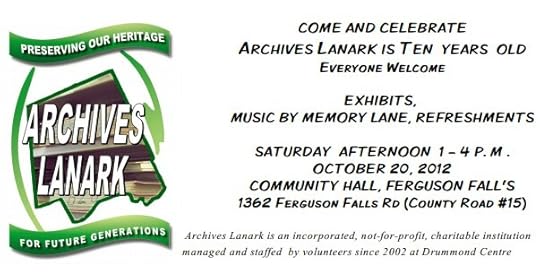
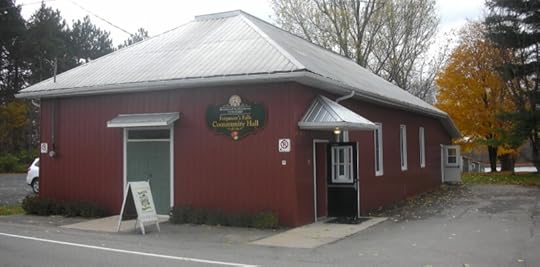 Ferguson Falls Community Hall, Oct. 12, 2012
Ferguson Falls Community Hall, Oct. 12, 2012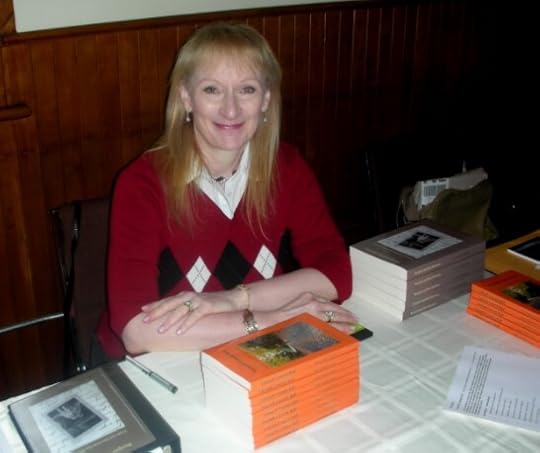 Archives Lanark 10th Anniversary – Arlene Stafford-Wilson at the book-signing table
Archives Lanark 10th Anniversary – Arlene Stafford-Wilson at the book-signing table Archives Lanark 10th anniversary 2012 – entertainment by ‘Memory Lane’, Mark Labelle on guitar on far left, Leo Scissions on guitar, with Heather Johnston on fiddle, and Jack Greer on banjo. (thanks to Stacey Horne, Arlene Quinn, and others who provided the names of the band members)
Archives Lanark 10th anniversary 2012 – entertainment by ‘Memory Lane’, Mark Labelle on guitar on far left, Leo Scissions on guitar, with Heather Johnston on fiddle, and Jack Greer on banjo. (thanks to Stacey Horne, Arlene Quinn, and others who provided the names of the band members)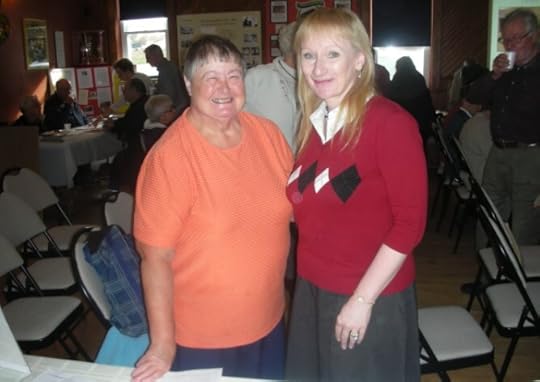 Archives Lanark 10th anniversary – with Elaine Morrow, from DeWitt’s Corners
Archives Lanark 10th anniversary – with Elaine Morrow, from DeWitt’s Corners Archives Lanark 10th anniversary 2012, with Lanark County Genealogical Society members,
Archives Lanark 10th anniversary 2012, with Lanark County Genealogical Society members, Arlene Stafford-Wilson (left) and Irene Spence (rt)
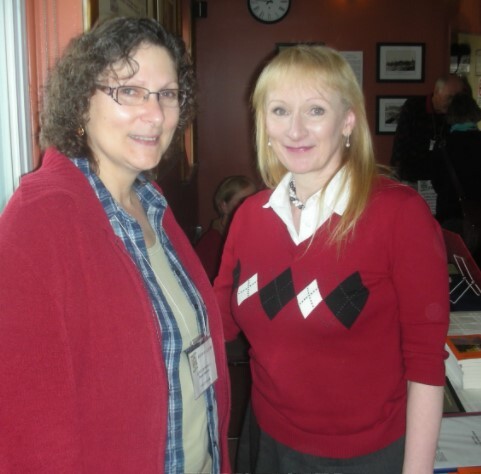 Archives Lanark 10th Anniversary in 2012, with Lanark County Genealogical Society President Janet Dowdall (left) , and LCGS member, Arlene Stafford-Wilson
Archives Lanark 10th Anniversary in 2012, with Lanark County Genealogical Society President Janet Dowdall (left) , and LCGS member, Arlene Stafford-Wilson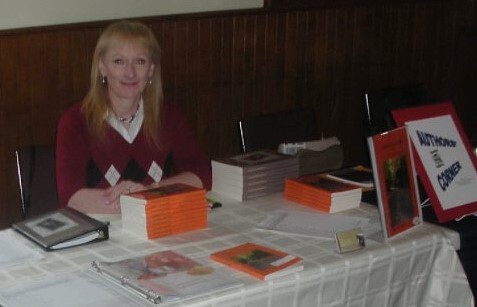 Arlene Stafford-Wilson at the Authors Corner, Ferguson Falls Community Hall, October 2012
Arlene Stafford-Wilson at the Authors Corner, Ferguson Falls Community Hall, October 2012Autumn in Ferguson Falls
 quote from “Lanark County Connections: Memories Among the Maples”
quote from “Lanark County Connections: Memories Among the Maples” Picturesque Ferguson Falls, along the Mississippi River
Picturesque Ferguson Falls, along the Mississippi RiverStafford family Sunday drives in the 1960s and 1970s began on the Third Line of Bathurst, often involved detours though Balderson and Lanark village, but they always seemed to end up at Ferguson Falls. Our father was born and raised on the 11th concession of Drummond Township, on the ancestral Stafford farm, settled by pioneer, Tobias Stafford in 1816. Our ancestor spent his first year on what became known as Stafford Island on the Mississippi River before building a home.
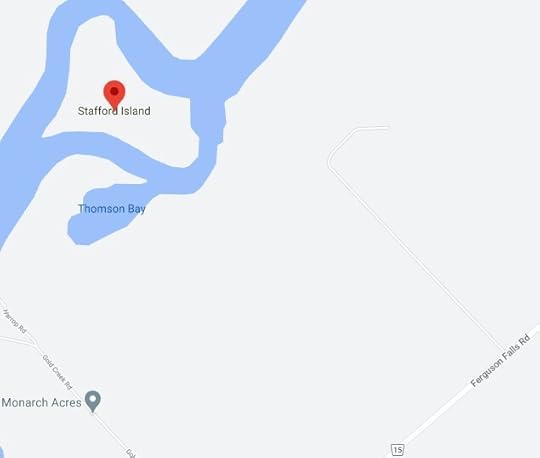
In the earliest days of the settlement, priests would travel to these small communities, and Sunday mass would be held in someone’s home. Once St. John’s Church in Perth was built, the pioneers travelled by horse and buggy, or horse and cutter, to attend services, until 1856, when St. Patrick’s Church was established, along the river.
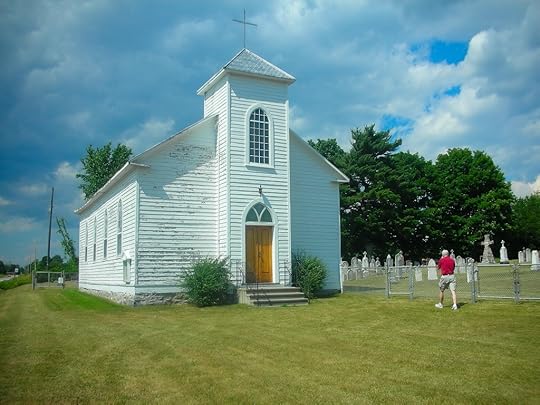 St. Patrick’s Roman Catholic Church, and my brother, Roger Stafford, in Ferguson Falls
St. Patrick’s Roman Catholic Church, and my brother, Roger Stafford, in Ferguson Falls
…And so, we returned again and again to Ferguson Falls on our Sunday drives; to the pretty village in Drummond Township. We listened to our father’s accounts of the glory days of the Prestonvale ball team, and the long walks to S.S. # 16 Drummond School in snowstorms. We always stopped at St. Patrick’s church, and walked up and down through the rows of the graves of our ancestors. Dad’s parents were buried there, and his grandparents, and the oldest ones, who had come from Ireland. The old families were all connected by marriage – Quinn, McKittrick, Richards, Carberry, Carroll, Ryan, McCaffrey, and the rest; and he pointed to the headstones as we walked through the rows.
There were always stories of the infamous Stumble Inn, across the bridge from the church, and the card-games, and the drinking, and the fighting. We heard about Billy McCaffrey and how he sold whiskey at all hours of the day and night from his modest establishment. We learned of the Hollinger family and the generations of local auctioneers, and their busy hotel that catered to loggers. The loggers danced in their spiked boots and old Charlie Hollinger had to replace the floors once a year. We heard about the McEwen family and visited their popular maple shack in the spring. We heard the local names over and over: Blair, McFarlane, Horricks, Rathwell, Cullen and Kehoe.
We learned that the Irish Roman Catholics were a devoted bunch, loyal to their church, but also possessed an entirely different belief system that included ghosts and fairies, and the little people. We heard about Jimmy Whalen, a neighbour to the Stafford family, and how his lover could still be seen late at night walking along the banks of the Mississippi River, searching for her long lost Jimmy. We listened to stories about the lumber wars in the old days between the McLaren and Caldwell families, and the yearly cattle drives to Carleton Place.
The Sunday drive always ended the same way, with a visit to Lloyd and Evelyn Dickenson’s store for an ice cream cone and a bottle of Pure Spring pop. Dad and Lloyd talked about the old days, and walked together along the shore, near the cottages, recounting tales of catching bullfrogs, and fishing in the river.
I miss our drives to Ferguson Falls, and stopping for a bag of curd at the Balderson Cheese Factory along the way, visiting the graves of our ancestors, walking where they walked, and hearing the stories of the good old days. Dad, and his cousin Tom are gone now, but their stories live on. I often wonder if they told the same stories again and again so that we would remember; remember the place where the ancestors settled, remember the customs and legends from the old country, remember so that we could tell their stories, of this special place, called Ferguson Falls.
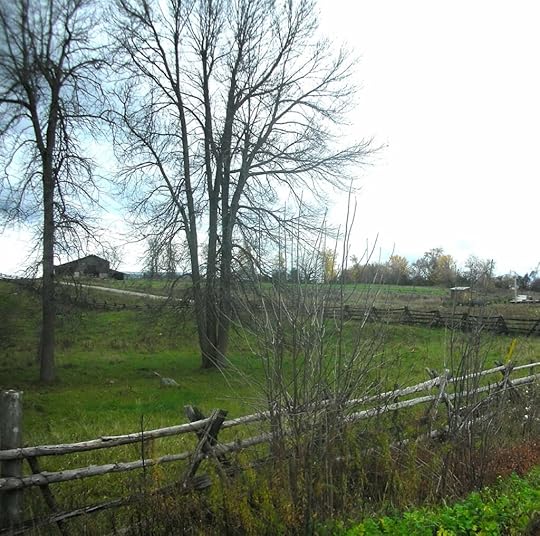
The old families of Ferguson Falls: Badour, Bennett, Blair, Byrne, Byrnes, Carberry, Closs, Craig, Cooke, Cullen, Cunningham, Cuthbertson, Dickenson, Donnelly, Doroway, Doyle, Ebbs, Ferguson, Finlayson, Forrest, Giles, Gommersall, Grey, Haley, Harrington, Hartney, Hicks, Hickey, Hogan, Hollinger, Horricks, Ireton, Keefe, Kehoe, Kenny, Little, McCaffrey, McEwen, McFarlane, McGarry, McIntyre, McIlquham, McLaughlin, McLenaghan, McNaughton, Montgomery, Moran, Moulton, Murphy, Murray, Nagel, Neville, O’Connor, O’Keefe, O’Sullivan, Phelan, Poole, Power, Price, Quinn, Rathwell, Robinson, Rothwell, Richards, Ruttle, Ryan, Scanlon, Spence, Stafford, Sullivan, Traill, Tullis.

For more information on Ferguson Falls and St. Patrick’s Roman Catholic Church: https://arlenestaffordwilson.wordpress.com/2012/07/06/st-patricks-church-fergusons-falls-lanark-county/
For Thomas Stafford’s account of the “Cattle Drives in Ferguson Falls” in “Lanark County Chronicle: Double Back to the Third Line”

For the legend of Jimmy Whelan, – “The Ghost of Ferguson Falls” – “Lanark County Calling: All Roads Lead Home”
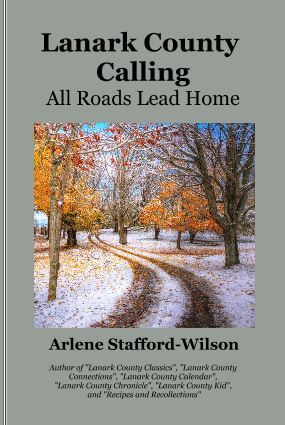
The story of “The Stumble Inn of Ferguson Falls”, from the book “Lanark County Collection”
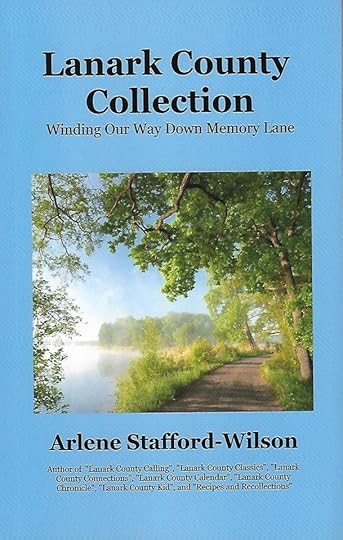
.
 Arlene Stafford-Wilson
Arlene Stafford-WilsonMember, Association of Professional Genealogists
Honorary Life Member, Lanark County Genealogical Society
Lanark County Pioneer Families Humanitarian Award
Francois Bregha Storyteller Award
Author of : “Lanark County Christmas”, “Lanark County Comfort”, “Lanark County Collection”, “Lanark County Calling”, “Lanark County Classics”, “Lanark County Connections”, “Lanark County Calendar”, “Lanark County Chronicle”, “Lanark County Kid”, & “Recipes & Recollections”, and “Lanark County Kitchen: A Maple Legacy from Tree to Table”.
July 3, 2024
A Lanark County Kid at Expo ’67

Throughout the entire year, in 1967, there were special events planned all across Lanark County, to help get everyone into the spirit of the 100th anniversary. There was even a special flag created that year.
Centennial Flag

It was a stylized maple leaf made up of 11 triangles, representing the provinces and territories. I remember that the Lions Club was selling these flags in Perth, and one of the first places to hang one was at ‘The Perth Courier’ offices. The grade eight students at Queen Elizabeth School went one step further, and constructed a three dimensional version of the flag. They had a special ceremony at their school, with some local dignitaries – Rev. J. Gillanders did a devotional service. The Principal Miss Jean Blair was there, John Scott, Mayor Burchell, and Jack Wilson.

The Royal Canadian Mint issued new coins for the centennial year. Each coin depicted a different Canadian animal – the back of the dollar coin had a Canada goose, the fifty cent piece was a wolf, and the back of the quarter was a lynx. The Bluenose schooner on the back of the dime was replaced with a mackerel, the nickel featured a rabbit, and the one cent coin had a dove. It was also the last year that pure silver was used in our coins.

Off to Montreal!
Mother and Dad decided that they would like to go to Montreal that year for the centennial celebration called ‘Expo ‘67’. This was a kind of ‘world’s fair’, and was to be held in Montreal, Quebec, from April to October that year. There were 62 nations in total that participated, and they each had displays and ‘pavilions’ set up to showcase their countries. It was held on Ile Sainte-Helene, and Ile Notre-Dame, on an already existing island, and some ‘created’ islands as well. There were likely many discussions back and forth between Prime Minister Lester B. Pearson and the mayor of Montreal Jean Drapeau, to get everything just right. Canada would be hosting many nations of the world, as well as its own citizens celebrating their centennial.
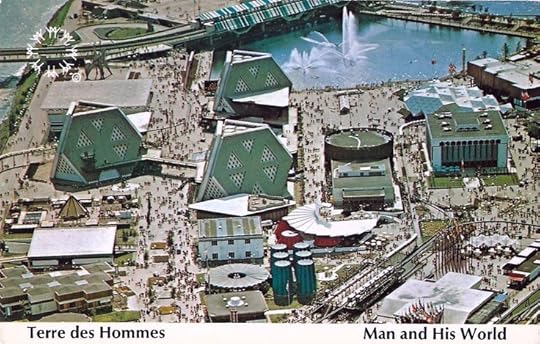
Dad was delivering milk, door to door in Perth, working for Chaplin’s Dairy in Glen Tay at that time, and he would have his usual two weeks of vacation in July.
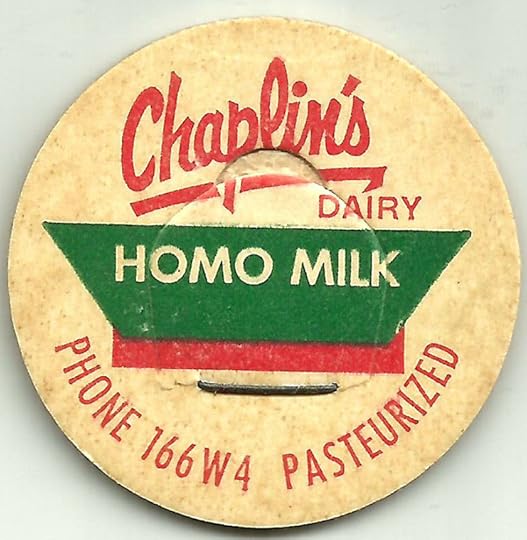
It was decided that one of Dad’s vacation weeks would be spent at ‘Expo ‘67’, and Mother, who was the usual arranger-of-travels, began to look for accommodations. Mother read in the newspaper that there were families that lived close to the exhibition grounds in Montreal, who were renting rooms in their homes, and so she began making some phone calls, and writing some letters. She found an English-speaking family who lived within walking distance to the Expo; they even had a little girl that was a couple of years younger than me, so that I would have someone to play with. This seemed like an ideal choice.
Now came the tricky part…….. Dad did not like driving in heavy traffic. He did not like driving in Quebec. He did not like driving on freeways. Hmmm……Mother was going to be asking him to drive on busy highways, in Montreal, to probably what would be the most congested area for traffic in the entire country that summer. This was going to be ‘interesting’.
The months passed by quickly, like they always do. There were lots of celebrations going on all over Lanark County, and so, because it was such a busy year, I think that the time passed even faster than usual. The big week finally came. It was time for Dad’s vacation. The weather was hot and sunny, and we packed up the old Buick with our well-worn suitcases, and we drove down the lane, turned left onto the Third Line, and headed for Montreal.

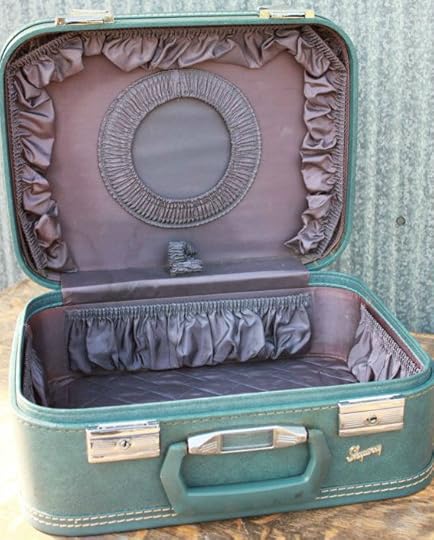
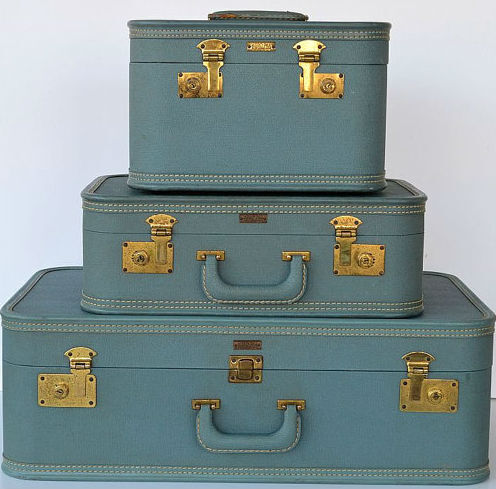
We crossed over at Glen Tay, and turned right onto Hwy 7, and headed east. It wasn’t long before we saw the signs telling us how many miles it was to get to Ottawa. Mother said we’d be passing by Ottawa on the Trans Canada Highway, and then continuing on to Montreal.
Dad didn’t like driving on the Queensway; not at all. By the time we passed Bayshore I could see that he was getting a little ‘hot under the collar’. By the time we got into Quebec, and were getting close to Montreal, I discovered for the first time in my life, that my father was bilingual. No, he couldn’t speak French. He had grown up on the 11th Concession of Drummond Township after all, on a farm, in the 1920’s and 30’s. No, there wasn’t really any French being spoken up there. No, the language that he started speaking, just outside of Montreal that day so long ago, was a completely new one – one that he likely wouldn’t want to be speaking when he dropped Mother off at Calvin Church on Sunday mornings.

Mother was giving him ‘the look’, and for once, it didn’t seem to be having any effect. Apparently, from what I could gather, Dad was not too impressed by the skill level of the drivers in our neighbouring province of Quebec.

Once we got into the downtown core of Montreal, we were trying to find the house where we’d be staying. Dad got lost a couple of times before we finally arrived, and once again he demonstrated his fluency in a second language. He would not, under any circumstances, stop and ask for directions, and Mother was frantically unfolding and re-folding the city map of Montreal. I sat quietly in the back seat, and hoped that we’d be there soon.
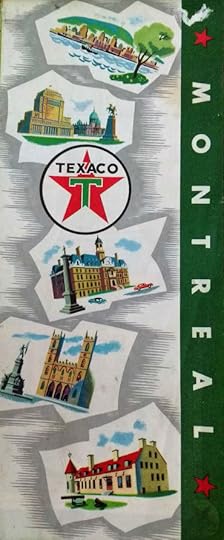
We finally found the house, and pulled into their driveway. They were very friendly people, and came right out to our car to greet us. Their names were Jimmy and Vicki Irvine, and their little daughter Sharon was there beside them. Jimmy helped Dad carry the luggage inside, and they showed us the room where we’d be staying, and I had a nice little cot on the floor, on one side of their room.
Mrs. Irvine was very kind, and she already had our supper on the stove. She and Mother chatted in the kitchen, and Dad and Jimmy went back outside so Dad could have a smoke. Sharon took me downstairs to their basement, and wow, their basement was really something! She had more toys than I’d ever seen in my life, and right smack in the center of all of the toys was a spring horse!! It was a plastic horse, set on a metal frame, and suspended by big heavy springs, and you could climb on its back, and either go up and down, or backwards and forward. I loved it! I was going to ask if I could have one of these for Christmas. I thought to myself that there really wasn’t much chance of that happening, so I’d better enjoy riding it while we were staying here.

We stayed with the Irvine family for the entire week. We’d take the short drive to Expo ’67 each morning after breakfast, walk around, and see all of the different pavilions that were set up to showcase each country. We even got a little paper ‘passport’ booklet, and a new stamp was added each time we visited another country’s pavilion. That was a pretty cool souvenir!


Another souvenir from that trip was a little notepad with a red plastic cover, with the centennial maple leaf design on the front, and even better still, I was given three four-leaf clovers. Mr. Irvine had a patch on his lawn where there were four-leaf clovers growing, and he picked three of them for me to press in my little notepad, before we left at the end of the week.
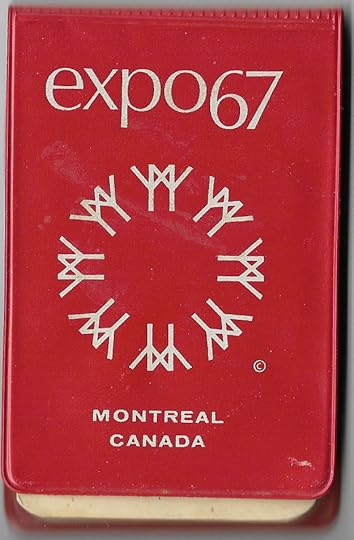
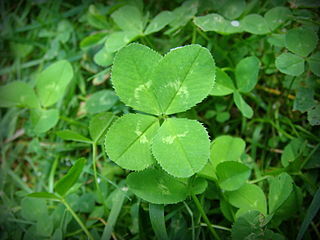
Mother and Dad kept in touch with the Irvine family for many years. We never returned to Montreal, but they sent Christmas cards back and forth each year, for many years, until one year when Mother didn’t receive a card. It had been many decades since our trip, and Mother wondered at the time if one of them had passed away. The Christmas before that was the last time we would hear from them. It was sad to have lost our connection with the Irvine family. Whenever we’d receive their Christmas card each year it always brought back the memories of Expo ’67, and of all of the centennial celebrations.

I fondly recall all of the special events in Perth that year, and in different parts of Lanark County. When I think of the 100th anniversary of confederation, and of Expo ’67, I will always remember the Irvine family, and how they graciously opened their home to us, strangers from another province, that they welcomed us as if we were old friends, and made us feel a part of the big celebration going on in our country that year.
It serves to remind me, even today, that there are good folks everywhere, not just in our own back yards, but all across this great nation of ours.

“Patriotism is not short, frenzied, outbursts of emotion, but the tranquil, steady dedication of a lifetime.” Adelai Stevenson
…………….
(story is an excerpt from ‘Lanark County Kid: My Travels Up and Down the Third Line” ISBN 978-0-9877026-16)
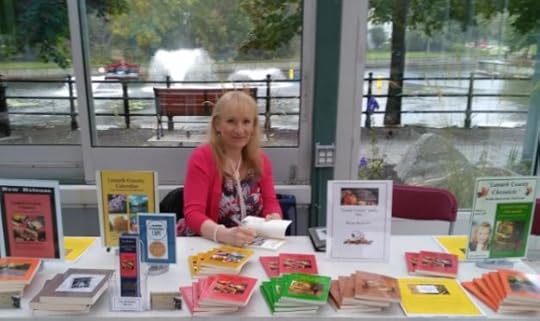
Arlene Stafford-Wilson
Member, Association of Professional Genealogists
Honorary Life Member, Lanark County Genealogical Society
Lanark County Pioneer Families Humanitarian Award
Francois Bregha Storyteller Award
Author of : “Lanark County Christmas”, “Lanark County Comfort”, “Lanark County Collection”, “Lanark County Calling”, “Lanark County Classics”, “Lanark County Connections”, “Lanark County Calendar”, “Lanark County Chronicle”, “Lanark County Kid”, & “Recipes & Recollections”, “Lanark County Kitchen: A Maple Legacy from Tree to Table”
July 2, 2024
Clyde Hall – Caldwell Mansion
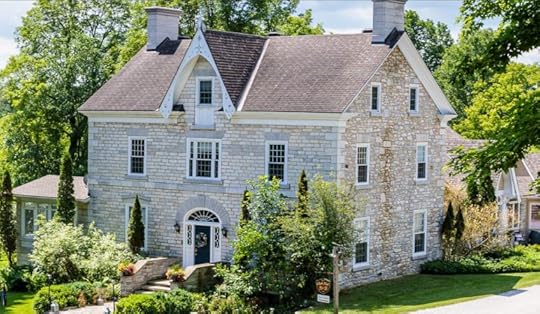
Clyde Hall
Caldwell Mansion
Caldwell Family
“They accepted the wilderness at its worst, defied it, and won.
It was a triumph of the human spirit over disaster.”
“The Caldwells of Lochwinnoch, Renfrewshire, Scotland, can be traced in direct lineage to an Alexander Caldwell, born 1636, died 1706. From this ancestor three successive generations of Alexander Caldwells carried on the family name until the auld Kirk burying ground gave them perpetuity in slabs of stone. Then came the first break when William Caldwell, son of the fourth Alexander, left the glens and braes, exchanging an Arcady for a wilderness.
William Caldwell was prospering in the Paisley shawl trade when the economic disaster, following the Napoleonic wars, blasted the weaving industry into financial ruin and drove its dependents into poverty. Then for many a family came the most difficult decision of a lifetime – to emigrate and transplant the roots of generations or to remain and suffer with kinsfolk. To their everlasting honor they did not shrink from meeting the only alternative, and this country gained thereby an infusion of that rugged independence of character which is the glory of the Scot, William Caldwell and his family were among those who accepted this challenge of destiny.
They came on the Earl of Buckinghamshire, William Caldwell, and his highland wife, Margaret McCallum, and their children, Margaret, Mary, Alexander and Boyd, who with 600 others faced a seven-weeks’ voyage under distressing conditions before setting foot on land. The limits of space preclude giving many names from the passenger list of emigrants on the Buckinghamshire, and other sailing ships, “George Canning”, “Commerce”, and “David of London”. Many of their descendants still live on the homesteads they hewed in the pioneer townships of Lanark.
Caldwell, and another emigrant, James McIlraith were members of the Paisley Townhend Emigration Society, and having drawn their location tickets from Colonel William Marshall, Superintendent of settlement at the Lanark depot, they selected their lots on either side of the Third Concession Line of Lanark Township, about seven miles northwest of the present village. They must have had an eye for something reminiscent of the glens of home for here a brawling burn known as the Little Clyde, cascades down a charming vista. Most appropriately, they called in ‘The Clachan” (small village), and it remained the motivating spirit of the Caldwell-McIlraith Settlement. Here, far from the noisy gnat-swarm of cities, they wrought out their separate destinies. They accepted the wilderness at its worst, defied it, and won. It was a triumph of the human spirit over disaster.
The Caldwells and all that gallant company started from scratch. Supplies and material were expensive and hard to procure. In summer they had to be ‘man-packed’ over the forest trails from distant centers. Their first log dwellings were chinked with moss, and their clothes were homespun. But there was an abundance of game and fish and wild fruit. They learned the first crude methods of making maple syrup and sugar, and brewed tea of herbs.”
(excerpt from an article by Harry J. Walker in “The Ottawa Journal”, March 23, 1937, p.6)
Caldwell Family
William Caldwell (1774-1863) and Margaret McCallum Caldwell (1788-1879) had ten children, six girls, and four boys: Margaret (1812-1877), Alexander (1815-1872), Mary Ann (1818-1872), Mary (1816-1852), Boyd (1818-1868), Euphemia (1821-1874), William (1822-1862), John (1825-1897), Ann (1830-?) and Agnes (1833-1907).
Clyde Hall

Alexander ‘Sandy’ Caldwell in 1869
Clyde Hall, the Caldwell mansion, was built in 1846 by the wealth generated from a successful lumber trade established by Alexander ‘Sandy’ Caldwell and his wife, Mary Ann Maxwell Caldwell.
Mary Ann died suddenly of a heart attack at age 54, in 1872, and her husband, ‘Sandy’ passed away three months later at age 57. (It’s been said that he never recovered from her death, and that he died from a broken heart)
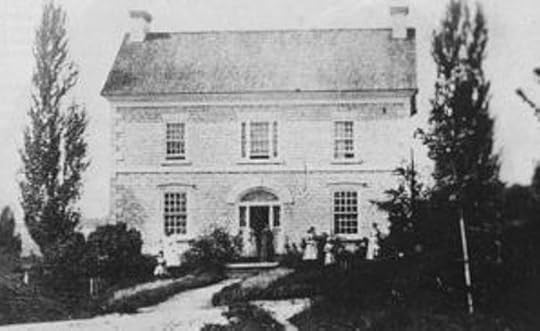
Clyde Hall in its early days

William Clyde Caldwell, son of Alexander Caldwell and Mary Maxwell Caldwell
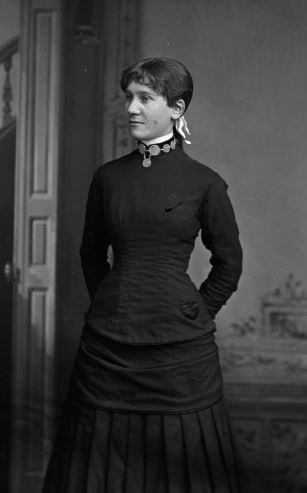
Miss Caldwell, June 1881, taken in Ottawa, by Wm. Topley (Library & Archives Canada)

Clyde Hall with the addition of a summer kitchen c. 1889
“Mr. W.T. Traynor, chairman of the reception committee, was waiting with a beautiful sleigh drawn by four beautiful white horses, driven by Mr. James McArthur, and gaily decorated in honor of the occasion.”
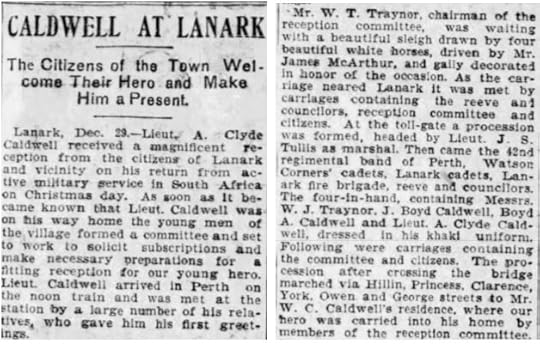
“The watch was presented by Mr. W.T. Traynor, and was a beautiful specimen of the watchmaker’s art, being solid gold, 14 carat, 21 jeweled, hunting case, bearing on the outside the monogram, A.C.C., while on the inside was engraved, “Presented to Lieut. A.Clyde Caldwell, R.C.R. by his fellow citizens, on his safe return from active military service in South Africa, Lanark, Dec. 1900.”
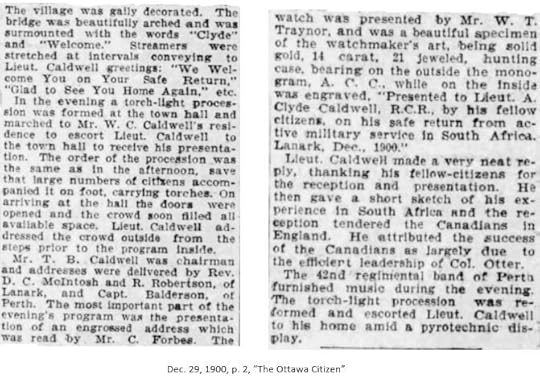
Clyde Hall estate was passed down to Thomas Boyd ‘T.B.’ Caldwell, the son of Boyd Caldwell, when he was left as “sole representative and proprietor of the Boyd Caldwell interests”, including the Caldwell Woolen Mill, lumber enterprises, mining rights, and a store in Lanark.
Thomas Boyd Caldwell, known as “T.B.” Caldwell, was a Member of Parliament for North Lanark, under Wilfred Laurier,
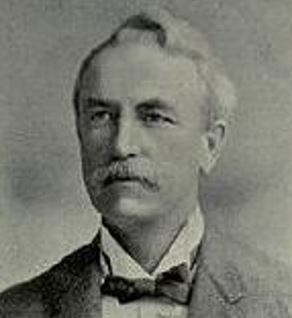
Thomas Boyd ‘T.B.’ Caldwell, M.P. for Lanark North, (1856-1932), was the last of the Caldwell family to own Clyde Hall

Clyde Hall c. 1900

April 9, 1908, p. 10, “The Ottawa Journal”
Clyde Hall – Legacy of the Caldwell Family
“In Lanark village, the old Alexander Caldwell house, known as ‘Clyde Hall’, remained in the family for nearly a century.”

Clyde Hall remained in the Caldwell family until the summer of 1932, following T.B. Caldwell’s death, when it was sold to Mr. M.J. Cullen.
Cullen family
M.J. Cullen was the Chief Immigration Inspector of the Dominion, for three terms, and private secretary to the Hon. Wesley Gordon, Minister of Immigration.
Michael Joseph Cullen (1884-1951) married Mary Louise ‘Minnie’ Nagle, (1877-1952) in Carleton Place, in 1907. Their children: John Arthur Cullen (1911-1992), Muriel Cullen Macdonald (1913-1992), Kathleen Cullen Macdonald (1915-1991), Dorothy Cullen Burnett (1916-2005), Frances Cullen (1916-1919), Helen Cullen McCormick (1920-1975), and Mary Cullen Meagher (1929-2011)
When the Cullen family bought Clyde Hall, Michael was 48, his wife, Minnie, was 45. Their children: John was 21, Muriel was 19, Kathleen was 17, Dorothy was 16, Helen was 12, and Mary was 3.
“Mr. M.J. Cullen has recently bought from the T.B. Caldwell estate, the fine old residence known as ‘Clyde Hall’, in Lanark Village.”
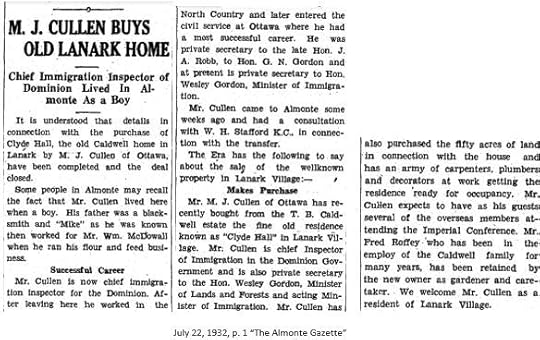
The Cullen family enjoyed Clyde Hall as their summer home, and many upgrades were completed while they owned the property. They retained one of the Caldwell employees, Mr. Fred Roffey, as their gardener and caretaker.
The Cullen family remained at Clyde Hall for six years, then in 1938, they sold the property to Ottawa businessman, Herbert Plant and his family.
Clyde Hall Sold
to Herbert Plant
“Mr Plant, a brother of a former Mayor of Ottawa, and prominent businessman, intends further to improve the property.”
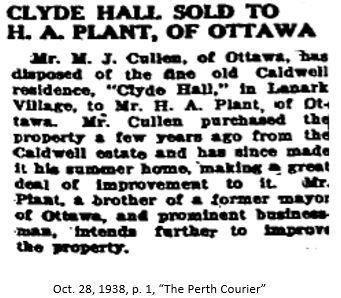
Plant family
In the fall of 1938, M.J. Cullen sold the property to Herbert A. Plant, (1893-1972) an Ottawa businessman. Plant was the co-founder of Plant and Anderson Limited, and in later years he was a Director of the Ottawa Rough Riders. His brother, Frank H. Plant, served as Mayor of Ottawa from 1921-1923, and again in 1930.
Clyde Hall was a summer home for Herbert Alfred Plant (1893-1972) and his wife, Gladys Lilian Robertson Plant (1895-1986), and their two children, Isabel Plant, (1922-2006), and James Plant, (1925-2018)
Gladys Plant was a member of the Imperial Order of the Daughters of the Empire (I.O.D.E.), and frequently entertained members of her club at Clyde Hall, during the summer months, when they were in residence there.
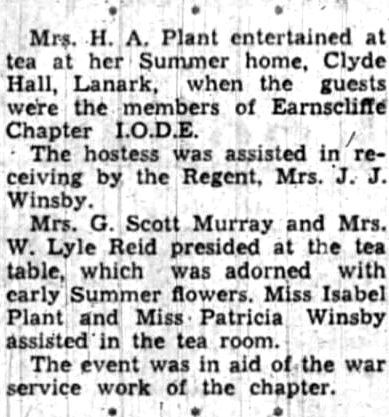
June 27, 1940, p. 10 “The Ottawa Journal”
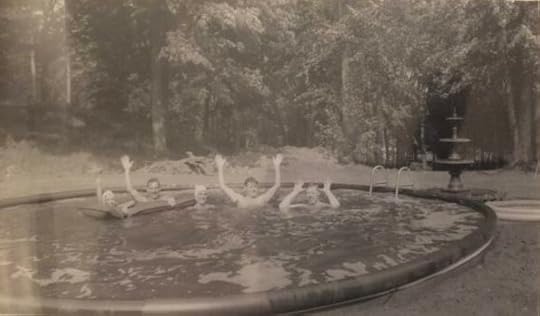
The Plant family enjoying the pool at their home, Clyde Hall, Lanark, ON

Clyde Hall For Sale
$29,500
In the fall of 1957, Clyde Hall was put on the market:
“14 spacious rooms, and 58 acres. One of the finest estates in the valley.”

Sept. 28, 1957, p. 23, “The Ottawa Journal”
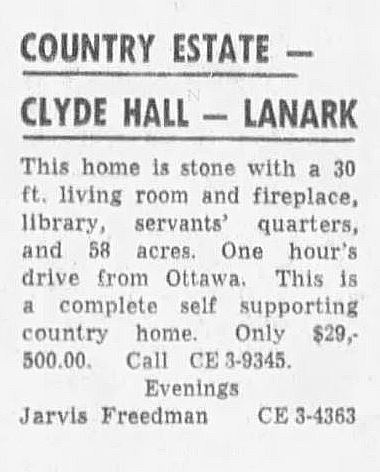
May 15, 1958, p. 26, “The Ottawa Citizen”
McMullen family
Pearl Lusk McMullen, daughter of Howard Lusk and Jessie Grant, purchased Clyde Hall in 1958, along with her son, Thomas ‘Bob’ McMullen and his wife, Jean Victoria Wilmott McMullen, and established the Clyde Hall Nursing Home.
Pearl’s grandchildren, Sharron ‘Sherri’ McMullen (Lillico), James McMullen, Gloria McDonald, Betty Ann McMullen Stanton, Robert McMullen, and Thomas McMullen spent their summers at Clyde Hall.
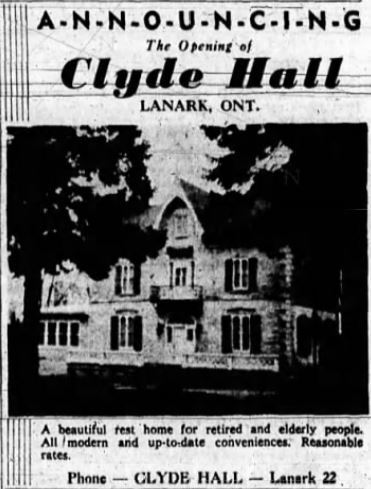
July 19, 1958, p. 7, “The Ottawa Journal”
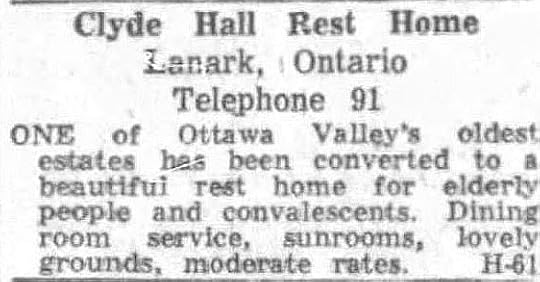
September 3, 1958, p. 35, “The Ottawa Citizen”
On March 19, 1963, Pearl McMullen, owner of the Clyde Hall Nursing Home, passed away suddenly, at age 62.
By the fall of 1963, Clyde Hall was under new management.
In 1963 – Clyde Hall Nursing Home
Under New Management
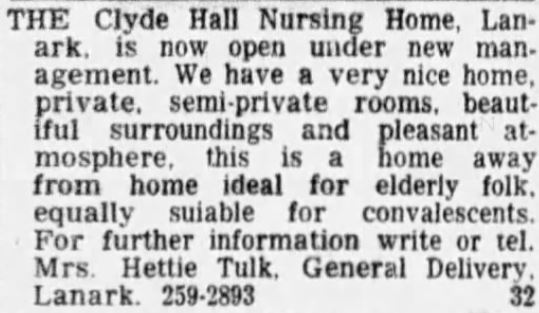
Nov. 7, 1963, p. 43, “The Ottawa Citizen”

May 23, 1964, p. 37, “The Ottawa Journal”
By the early 1970s, the structure was abandoned by the owner of the property, who lived in Toronto. The building became rundown, and vandalism and looting were rampant.
1970s – Youth Programs
& Project Echo
In the summer of 1972, a program called Opportunities for Youth was established in Lanark County. One of the projects initiated was called ‘Project Echo’, and they received a grant of $12,200, to provide a center for local youth. The owner of Clyde Hall (unknown) a resident of Toronto, kindly allowed the members of the project to use it, rent free for their drop-in center.
“They received a grant of $12,200 to provide a center for local youth.”
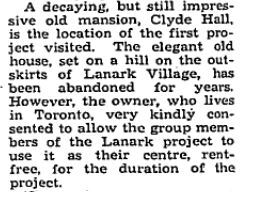
July 6, 1972, p. 2, “The Perth Courier”
The program ran from July – September in 1972. In the afternoons and arts and crafts program included bead-work, fabric printing, ceramics with clay, batik, and candle-making. Evening programs featured games, music and entertainment. On September 3, 1972, the program’s final event, a music festival, was held at Clyde Hall, Toronto music group, ‘Crab Shaw’, were the evening’s special guests. Local musicians were invited to play. The festival attracted between 100-200 youth.
“By the late 1970s, there were safety concerns brought to the attention of the Lanark Township Council concerning an open well on the abandoned property.”
The property remained empty, abandoned, and overgrown during the 1970s, 1980s, and 1990s.
Mysterious Fire of 1999
The fire of 1999 destroyed the interior, and left only a shell of the former glory of the once stately building. It is believed to have been caused by arson.
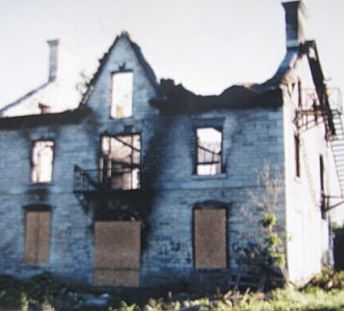
Very little remained of the beautiful historic home of the Lanark Caldwell family.
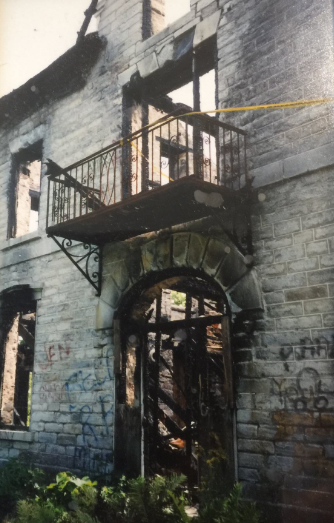
Lillico family

In an article in by Iris Winston, in “The Ottawa Citizen”, Oct. 4, 2003, p. 81:
“As a teenager, Mrs. Lillico had spent her summers helping at the retirement home that her grandmother, Pearl McMullen, operated out of Clyde Hall. The house, together with the 300 acres around it, was eventually purchased by Ms. McMullen in 1958. After her sudden death five years later, ownership reverted to the Toronto businessman who held the mortgage on the property.
Mrs. Lillico made several unsuccessful attempts to buy the house from him. Disheartened, she recognized that she must let her dream go.
In 1999, Mrs. Lillico discovered that her grandmother’s property had been purchased by a local developer, who intended to use most of the land for a golf course. He was also ready to sever the house and 10 acres around it from the golf course development. The news rekindled Mrs. Lillico’s dream to own the property.
Although the interior had been gutted (by the fire of 1999), and the roof had caved in, the two-foot-thick stone walls remained intact. So did Mrs. Lillico’s passion for the house. By January 2001, it was the Lillicos’ new home.
Rebuilding and recreating Clyde Hall in the image of the original with the added conveniences of modern plumbing and kitchen facilities was an 18-month undertaking.
Mr. Lillico recalled, “..We made sure that reconstruction was identical to the way it was in 1870. The beams are the same size, hooked into the stone in the same way. The timbers are extra heavy and extra-large. We had to use a manual lift to put them in place in each floor.”
Eaves and decorative overhangs were customized to replicate the originals. The banister and a few of the wooden spindles below it had survived the fire. Replicas were made to complete the reconstruction of the staircase.
It took some time to find a tradesman willing to tackle the complex job, until Michael Miller, an enterprising fellow from Carleton Place accepted the challenge.
The whole project, from purchase through renovations has cost the couple about $700,000.”
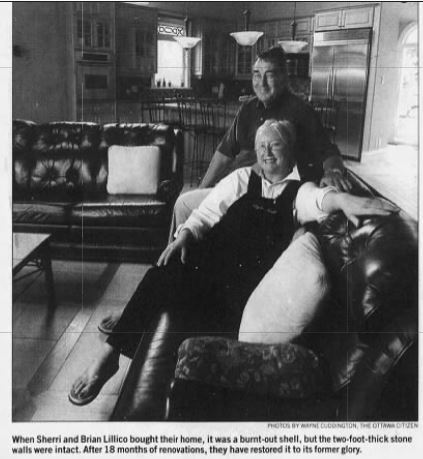
photos by Wayne Cuddington, “The Ottawa Citizen”, Oct. 4, 2003, p. 81
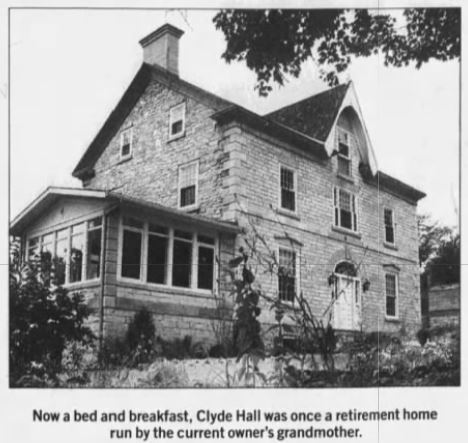
Oct. 4, 2003, p. 81 “The Ottawa Citizen”
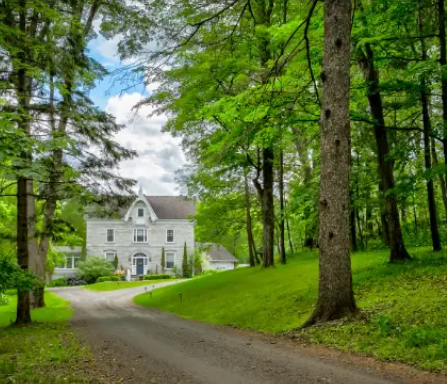
New Gates added 2011
In 2011, local Blacksmith, Tony Walsh, created new gates for Clyde Hall.
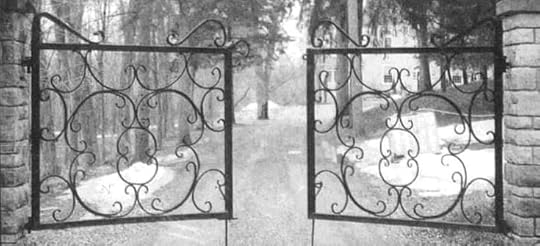
April 9, 2011, p. 39, “The Ottawa Citizen”
Salzmann Family

photo: from the Clyde Hall website – http://www.clydehall.com
In 2017 Liisa and Robert Salzmann moved from Toronto and purchased Clyde Hall. Liisa is a gourmet chef, and Robert is a certified Master Pastry Chef. He also works part time as a Professor at Algonquin College, teaching baking and pastry arts.
Clyde Hall offers High Tea, Rehearsal Party Dinners, Gift-Opening Brunches, and Wedding Cakes. They also offer courses on the art of running a bed and breakfast business.
Photos of Clyde Hall Bed and Breakfast:
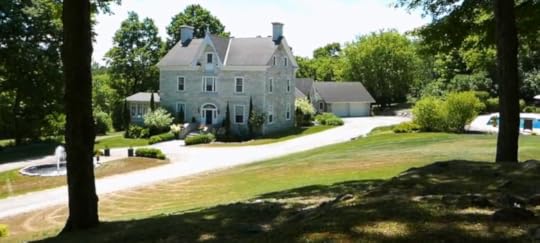
The driveway and scenic grounds of Clyde Hall as it appears today
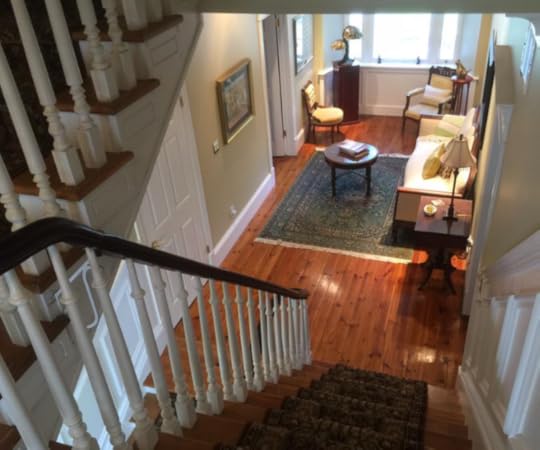
Entrance hall and staircase at Clyde Hall

One of the elegant rooms at Clyde Hall

Clyde Hall parlor

Decorated to preserve the historical features
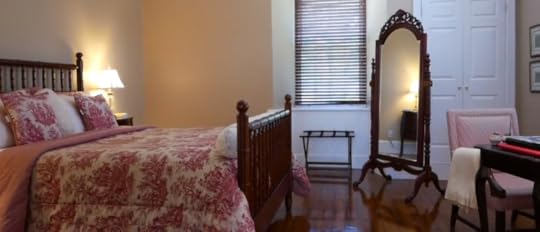
One of the bedrooms at Clyde Hall
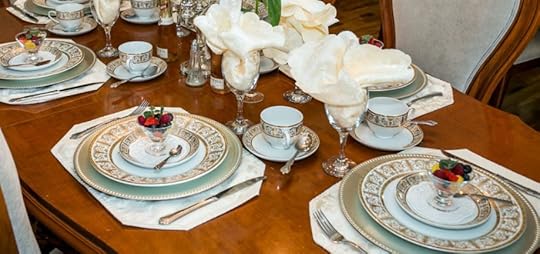
Elegant dining at Clyde Hall (photo from the Clyde Hall website)
Clyde Hall
Past, Present, and Future
…And so, we’ve witnessed the evolution of Clyde Hall, from its proud beginnings as the mansion of the wealthy Caldwell family, those hopeful sons and daughters of Scotland who came to the New World, worked hard, and found success. The Caldwell offspring continued their legacy, provided employment for many, served their communities in politics, and for them Clyde Hall became a proud symbol of their success.
The families that followed added their own special spirits to this historic home – Michael Cullen, the Chief Inspector of Immigration for the Dominion, his wife, Minnie, and their large busy brood of children, laughing and playing on the grounds. The Cullen family hosted the overseas members attending the Imperial Conference within the walls of Clyde Hall.
Next, there was Herbert A. Plant, founder of Plant and Anderson Limited, Director of the Ottawa Rough Riders whose brother had risen to the ranks of Mayor of Ottawa, and Herbert’s wife, Gladys Plant, an elegant hostess, and their two children, Isabel and James.
Pearl Lusk McMullen came next to Clyde Hall, with her vision for a beautiful home for the aged, set among the tall trees and spacious lawns – the perfect setting for her guests to heal their bodies and their spirits. The McMullen grandchildren never forgot their idyllic summers spent at the mansion – Sherri, James, Gloria, Betty Ann, Robert, and Thomas.
Although Clyde Hall had a brief moment during the 1970s when it served the youth of the community, it may remain a mystery as to why the owner in Toronto left the property abandoned for so many years, or if the fire in 1999 was truly accidental.
Brian and Sherri Lillico, Clyde Hall’s next owners, took the burned stone shell, and pile of ashes, and through hard work and determination brought the mansion back to her former glory and beyond. Like her grandmother, Pearl, Sherri thought the magnificent home should be shared with others, and she and her husband established a bed and breakfast.
Clyde Hall’s current owners, Liisa and Robert Salzmann continue the tradition of inviting guests to their elegant country estate for rest, relaxation, fine dining, and special events. Robert, a Master Pastry Chef, and Liisa, a gourmet chef, bring the element of finely-crafted food to their inviting bed and breakfast.
As Clyde Hall evolves over the years we can only imagine what her future may hold. The estate is one of the crown jewels in Lanark’s past and present, and a monument to the proud history of the community. From a stately home for the Scottish lumber barons, to an elegant bed and breakfast fit for a king, Clyde Hall’s history, mystery, and mystique, lives on.
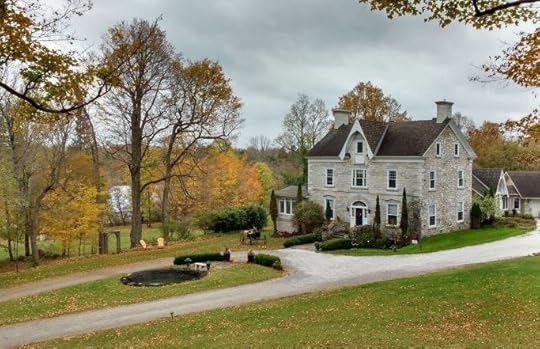
Clyde Hall is located at 131 Mill St. in beautiful Lanark, Ontario
For more information: https://www.clydehall.ca/
For more local history and stories set in Lanark County: http://www.staffordwilson.com
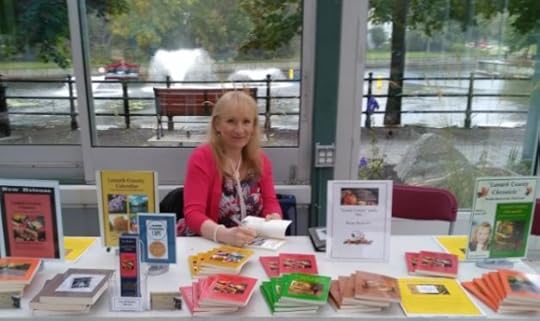
Arlene Stafford-Wilson
Member, Association of Professional Genealogists
Honorary Life Member, Lanark County Genealogical Society
Lanark County Pioneer Families Humanitarian Award
Francois Bregha Storyteller Award
Author of : “Lanark County Christmas”, “Lanark County Comfort”, “Lanark County Collection”, “Lanark County Calling”, “Lanark County Classics”, “Lanark County Connections”, “Lanark County Calendar”, “Lanark County Chronicle”, “Lanark County Kid”, & “Recipes & Recollections”, and “Lanark County Kitchen: A Maple Legacy from Tree to Table”
June 27, 2024
Balderson Cheese – Craving the Curd
Whenever a kid in Lanark County heard the word ‘Balderson’ spoken at their home, most of the time their thoughts turned to cheese. The Balderson Cheese Factory was a short drive up the Lanark Road from our place, and they made the best cheese in the world. People came from miles around to buy Balderson Cheese, curds, and butter, and our family was no different. Usually a visit to the cheese factory took place as part of a Sunday drive.
Balderson is a small hamlet situated about halfway between Perth and Lanark and was one of the earliest communities settled, along with Perth. Balderson, a suburb, was also settled partly by soldiers, and partly by Scottish immigrants from Perthshire in the Scottish Highlands. It was founded by Sergeant Balderson in June 1816.
When we spent time in Balderson during the 1960s and 1970s some of the family names were: Bell, Burns, Davidson, Devlin, Haley, Jones, Kennedy, King, McGregor, McIntyre, McTavish, Myers and Newman.
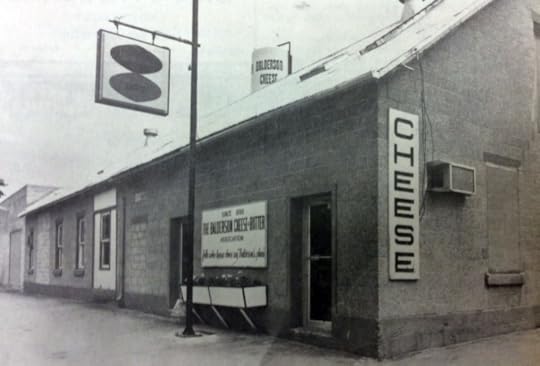

The Balderson Cheese Factory factory was established 1881. It was formed by a group of Lanark County dairy farmers, known as the Farmer’s Cheese and Butter Association of Balderson. They decided to use the excess milk that they were each producing on their farms, build a factory, produce Cheddar cheese and sell it locally. They built a small, plain-looking, wood-frame building near the Balderson Corners crossroads.

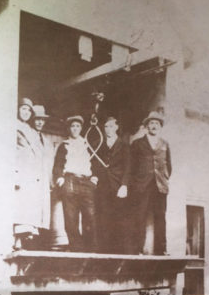
In the early days, each dairy farmer brought their milk by horse and wagon and dropped it off at the factory. Later, to become more efficient, special milk wagons were built, routes were established and workers from the factory traveled from farm to farm picking up the milk.
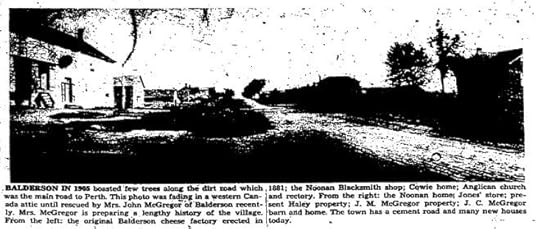
Just twelve years after opening, the Balderson Cheese Factory was one of the factories that contributed cheese to create the ‘Mammoth’ Cheese for the Chicago World’s Fair in 1893. The old timers said that it was six feet high and weighed over 20,000 lbs.

In 1929, a fire burned the original factory and all that was left was the concrete floor.
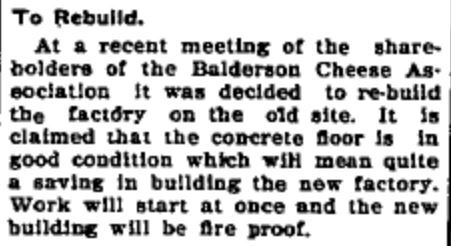
Although our dad was familiar with the original factory, we had only seen the one that was rebuilt in 1930. It was a plain-looking building and was built in a similar style to many of the other local cheese factories, in and around Perth. There was a small sign outside, and inside there was a very small counter and only three products were sold: cheese – yellow or coloured orange, cheese curds, and butter. You could buy mild cheese or old cheese, and Dad preferred the older ‘sharp’ cheese, enjoyed with a slice of Mother’s homemade apple pie. The cheese was cut from rounds, wrapped in waxed paper and sealed with a piece of scotch tape. There was one person working behind the counter who filled your order and rang it up on the cash register. Everyone else worked in the back.
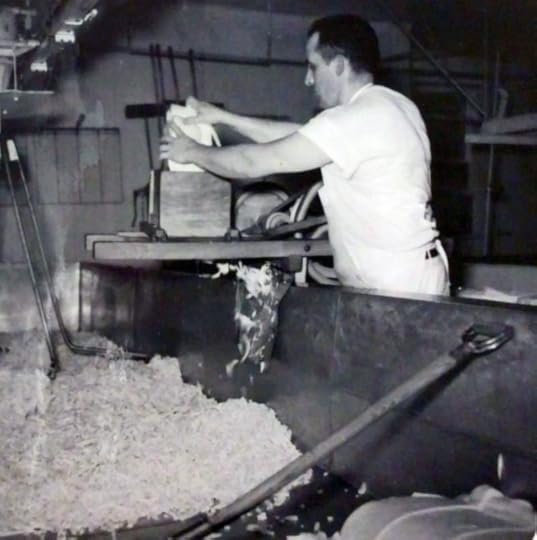
Dad often knew the person working behind the counter, and he’d ask if we could go back and watch them make the cheese. Now, that was really interesting! There was always a distinct smell in the factory, even at the front counter. It smelled kind of like buttermilk, and the air was always very warm and humid. All the magic took place behind the counter!
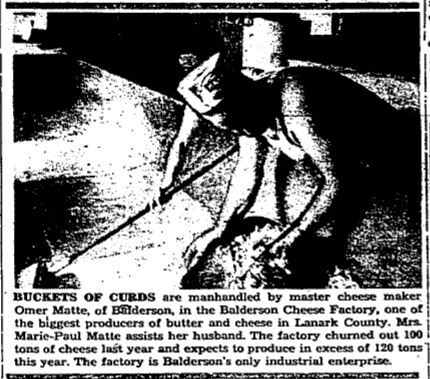
There were huge metal vats, filled with heated milk. I don’t know what they use now, but in those days, they added rennet to the milk to make it curdle. Rennet was an acid which could be found in the fourth stomach of calves and was used for digestion. When the rennet was added to the milk it curdled and formed into clumps. The workers in the factory walked around with long wooden paddles and stirred each of the vats. Some were newly curdling and were very easy to stir, others in later stages required quite a bit of muscle to stir because the curds were forming in large, heavy clumps. In the last vat the salt was added and some of the curds were strained out and sold, but the remainder was pressed into huge round wooden molds. The molds were lined with cheesecloth so that the cheese wouldn’t stick when it was time to remove it.
At the rear of the old factory, double walls were built two feet thick, with sawdust packed inside as insulation to keep the cheese cool as it cured. After the cheese was strained and pressed into molds it was stored in the curing room. The whey, the liquid that was strained from the cheese, was stored in big tanks. In the old days the whey was returned to the farmers to use as feed, but later when tighter government regulations were introduced the whey was dumped. Each cheese was waxed, boxed, weighed, molded, inspected, cooled, turned and shipped. The cheese was inspected by government inspectors and the stock turned over every ten days. The cheese remained in the curing room until it was shipped.
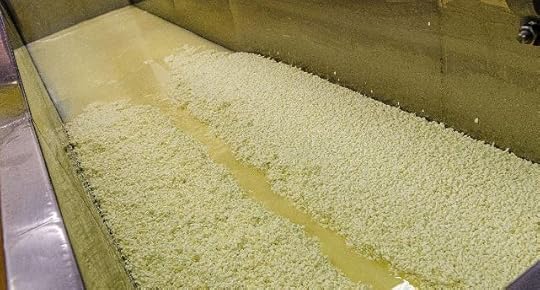
Cheese making was an art form in Balderson and their Master Cheese Maker when I was a kid, was Omar Matte. Mr. Matte began making cheese when he was fifteen, working for his father in St. Albert. By the 1960s he had been making cheese for 27 years. In those days, Mr. Matte would mold 120 tons of cheese per year and most was shipped to the Sanderson Grading Station in Oxford where it went on to foreign markets. Ten tons of cheese on average was sold locally in the Balderson area. Over 100 tons of cheese and 9,000 pounds of butter produced yearly by the mid 1960s and sold all over North America.
There were many Master Cheese Makers before him – Chris J. Bell of Perth, James Somerville of Boyd’s, Walter Partridge of the Scotch Line, James Prentice of Perth, Charles Gallery of Perth, Robert Lucas of Jasper and Percy George of Christie Lake.
Balderson Cheesemakers1881-1887 W. Brown
1888-1891 J. Milton 1888-1891
1892-1901 W.D. Simes
1902-1904 E.E. Haley
1905-1911 J.M. Scott
1912-1917 T.K. Whyte
1918-1921 M. Haley
1922-1929 A. Quinn
1930 G. Spencer
1931-1937 P. Kirkham
1937-1939 J.L. Prentice
1939-1941 C.J. Bell
1941-1942 J. Somerville
1943 W. Partridge
1944-1955 C. Gallery
1956-1958 R. Lucas
1959-1960 P. George
1961-1966 O. Matte
1966-1974 Y. Leroux
1975-1980 L. Lalonde
1980 N. Matte
Today’s Balderson CheeseAs the years passed by, Balderson cheese gained tremendous popularity, news of the product spread, and the little business was purchased by a large company. After many decades the Balderson Cheese business has changed hands many times.
You can still find Balderson cheese today, and many types and grades of cheese available in all of the major supermarkets.
I smile whenever I see the Balderson name and think of the little hamlet outside of Perth. I remember our Sunday drives to the old cheese factory, and how they made the best curd in the world!


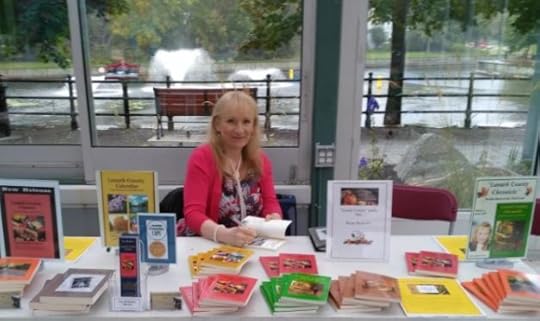
Arlene Stafford-Wilson
Member, Association of Professional GenealogistsHonorary Life Member, Lanark County Genealogical SocietyLanark County Pioneer Families Humanitarian AwardFrancois Bregha Storyteller AwardAuthor of : “Lanark County Christmas”, “Lanark County Comfort”, “Lanark County Collection”, “Lanark County Calling”, “Lanark County Classics”, “Lanark County Connections”, “Lanark County Calendar”, “Lanark County Chronicle”, “Lanark County Kid”, & “Recipes & Recollections”, and “Lanark County Kitchen: A Maple Legacy from Tree to Table”.(this story is an excerpt from ‘Lanark County Kid: My Travels Up and Down the Third Line’ ISBN: 978-0-9877026-16)
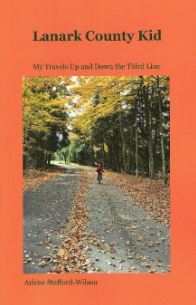
June 24, 2024
Norvic Lodge, Christie Lake
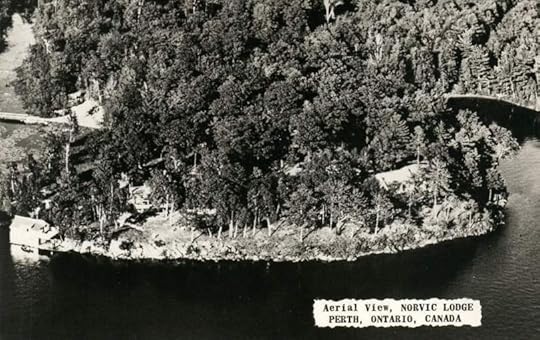
Norvic Lodge
Victor Lemieux and his wife Noreen (McGlade) Lemieux were owners and operators of Norivc Lodge. Like the other properties set along the shores of Christie Lake, they had a beautiful shoreline, framing their homey, rustic lodge.
Victor, son of Jeremie Lemieux, and Margaret Hannah James, was born and raised in the tiny village of Fournier, in the township of Prescott-Russell. The village is situated near the communities of Vankleek Hill, St. Isidore, and Plantagenet, a largely French-Canadian settlement. Victor’s father was a Lumberman, and his mother cared for the large family.
Victor’s wife, Noreen, grew up in the town of Perth, Ontario, the daughter of Arthur McGlade. The McGlade family were early settlers from Perth, originally from County Armagh, Ireland. Catherine McCarthy McGlade, Noreen’s mother, was also from an Irish pioneer family, from County Cork. Noreen’s parents were married in Toledo, Ontario, October 16, 1899.
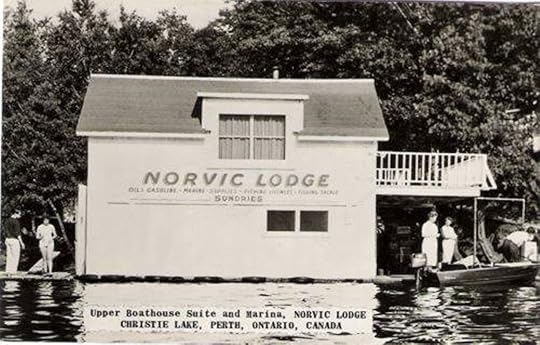
Norvic Lodge Boathouse, 1956
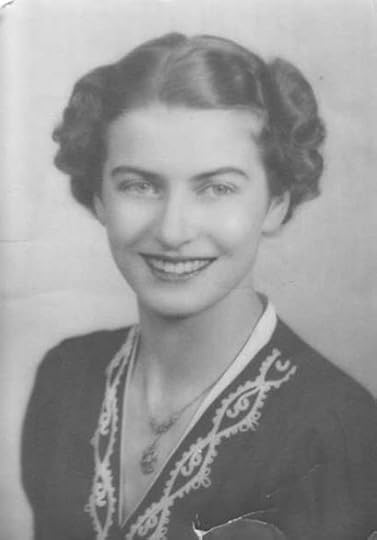
Noreen ‘Neen’ ‘Neena’ McGlade Lemiuex, Co-Owner, Norvic Lodge
Dining Room
at Norvic Lodge
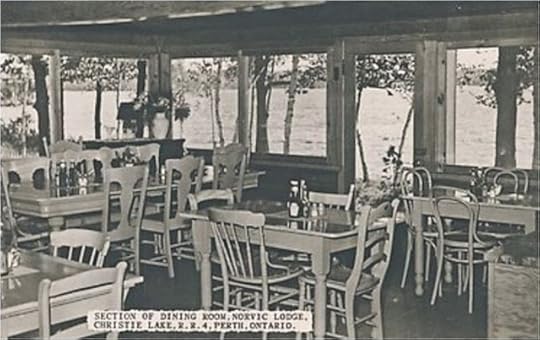
Dining Room, Norvic Lodge, overlooking Christie Lake – c 1960
Working at
Norvic Lodge
Memories of working at Norvic Lodge in 1960, as told by Judy (Stafford) Ryan:
“The Lodge was ‘Norvic” named after the owners – Noreen and Vic. She was called Neena, ‘Neen’, and they had a daughter Judy, – about my age at the time. The Lodge was on Christie Lake.
I was the only one in our family who had the job there, but because I also had a two week job at the Optometrist in Perth, while his secretary was on vacation, at the beginning of the Summer (Dad got it for me), my sister Jackie (Stafford) Wharton, went up to the Lodge, and held my job for me for that two week period. I think Dad was also the one who got me the job at the Lodge. Mother did not want me to go as she figured I would get into trouble.
We were paid $10.00 a week which was given to us at the end of the Summer. We made great tips from the Americans, who stayed in the cabins – I could make up to $100.00 a week, depending on whether or not the cabins were full that week.
Our cabin was at the top of a hill away from the vacationers. Our day started at 7:00 a.m. We had to be down the hill to the Lodge in uniform, to set up the dining room for breakfast, take breakfast orders, serve it, clear tables and help wash dishes, etc. We then went back up the hill, changed into shorts and t-shirts and cleaned all the cabins – made beds, dusted, vacuumed, cleaned bathrooms, changed towels, etc. Then, back up the hill, back into uniform, to do the lunch thing.
We were supposed to have a couple of hours off each afternoon, to do what we wanted. However, part way through the summer, the lady who did the laundry left, and that was added to our jobs, without extra pay. So after lunch, we would have to do the laundry – sheets, towels, etc. and hang them out on a line to dry. Once a week, we would have to strip the beds, but changed the towels often.
On days when we didn’t have to do the laundry, I would take the canoe, and a good book, and head for a small uninhabited island, and read for a couple of hours. I knew that no-one could get to me there.
Between 4:00 and 5:00 p.m. we were back down the hill, in our uniforms, to set up for dinner, etc., etc.
After everything was done, and cleaned up for the evening, we had time to ourselves, if we had any energy left. I worked with a girl by the name of Claudette, and she was a real party girl, and as there was a party at some cottage every night, we went out most nights, along with the guy who worked at the Lodge store and gas bar, and he was allowed to use one of the motor boats, and that is how we got to the other cottages.
Just before I arrived to work at the Lodge that summer there had been a bad boating accident, and I think one or two people had died. The only way I found out about it was I saw a mangled boat with blood on it, stored in behind the lodge, when I was out walking one day, and asked the guy at the gas bar what happened.
That Summer was the first time I saw death! There was a delightful family from Pennsylvania. there – three generations – Grandfather, parents, and two younger children. I was serving breakfast this one morning, and the Grandfather, who was always so friendly and animated, told me about the different birds he had heard singing that morning, and during the conversation, he keeled over at the table. I ran into the kitchen and got Vic (Lemieux) – told him the old man ‘fainted’. Vic got the son to help him carry the Grandfather into the Lounge, behind the dining room, and they put him on the couch. I remember going ahead and serving the other guests, and noticed people coming and going to the Lounge. Nina told me later that the old guy had died, probably instantly, and I was really shocked and upset. That is one of those memories that is permanently etched in your memory, especially when you are only 15.”

Norvic Lodge ad – 1971
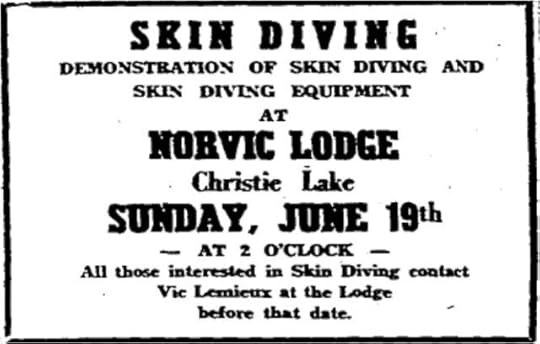
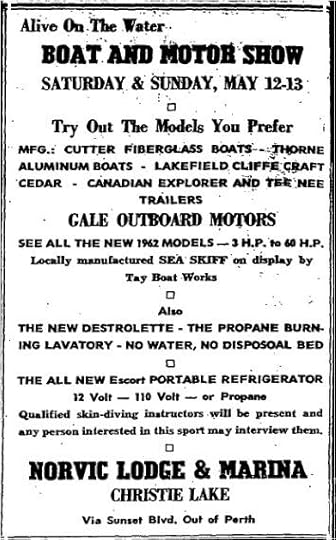
Ad – 1962
Waterskiing
at Norvic Lodge

Waterskiing Show 1963
Christie Lake Surfers
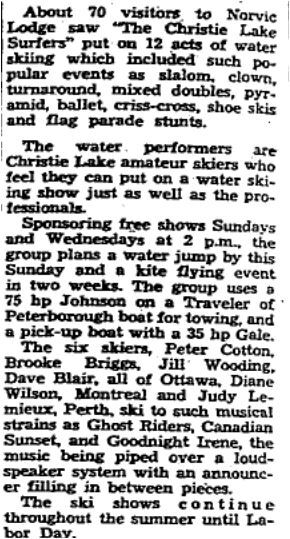

What became of Norvic Lodge?
Norvic Lodge closed many years ago, and so we are left with our memories of this special place – the home-cooked meals, Vic, Neena, the peaceful lake, the great fishing, and the excitement of the water-skiing shows will stay with us always.

***
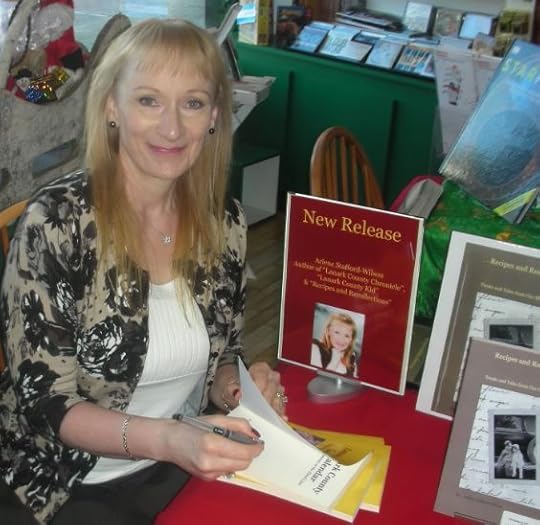
Arlene Stafford-Wilson
Honorary Life Member, Lanark County Genealogical Society
Member, Association of Professional Genealogists
Lanark County Pioneer Families Humanitarian Award
Historical Society of Ottawa -Francois Bregha Storyteller Award
Author of : “Lanark County Christmas”, “Lanark County Comfort”, “Lanark County Collection”, “Lanark County Calling”, “Lanark County Classics”, “Lanark County Connections”, “Lanark County Calendar”, “Lanark County Chronicle”, “Lanark County Kid”, & “Recipes & Recollections” and “Lanark County Kitchen: A Maple Legacy from Tree to Table”
June 23, 2024
Award – Historical Society of Ottawa
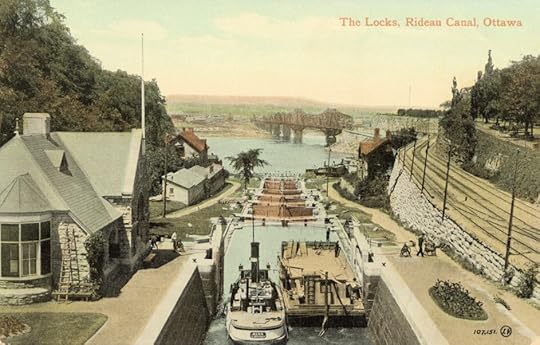
For as long as I can remember I’ve had a keen interest in local history, and going back to the early days of my youth I’ve written stories to capture many of these special moments in time.
When the Historical Society of Ottawa invited me to receive their distinguished François Bregha Storyteller Award, in Ottawa’s oldest stone structure, the Bytown Museum, it was both a delight and an honour.
Located a few blocks from our home, the artifacts in the venerable old Bytown Museum provide a glimpse into Ottawa’s early days, highlighting the early years of the construction of the Rideau Canal. The Historical Society of Ottawa’s connection to this special place began when the Women’s Canadian Historical Society of Ottawa was formed in June of 1898. Their goal was “to encourage the collection and preservation of Canadian historical records and relics and to foster Canadian loyalty and patriotism.” This group laid the foundation for what later became the Bytown Museum.
June 13, 2024
Awards Night
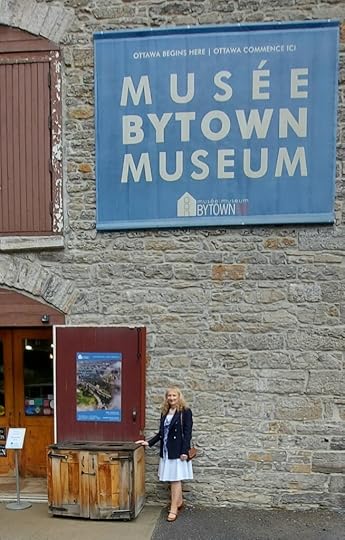
Arlene Stafford-Wilson – entrance to Bytown Museum
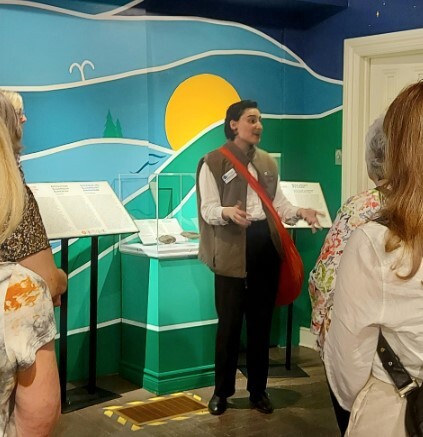
Our enthusiastic young tour guide showed us some of the many interesting highlights in the collection at the Bytown Museum. It’s always a pleasure to see a member of the younger generation with an interest in promoting and preserving local history.
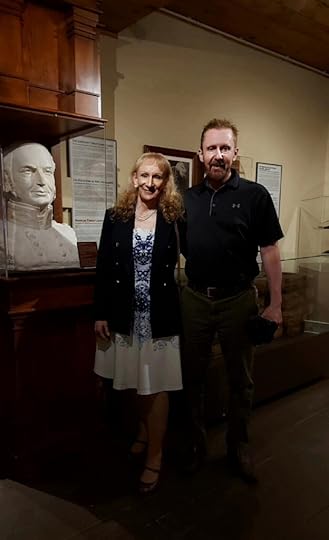
Arlene Stafford-Wilson with husband, Kevin Wilson on the Museum tour

A member of the Historical Society of Ottawa touring the Bytown Museum

Historical Society members with tour guide
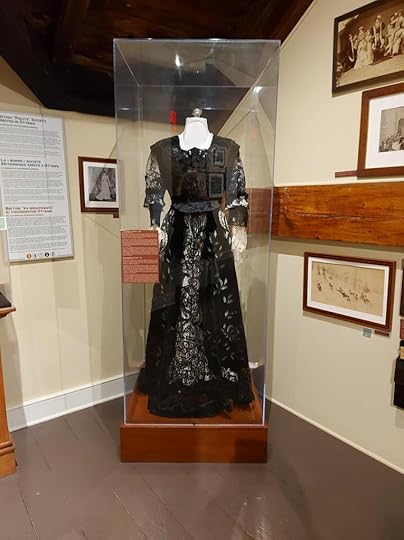
A priceless gown from the early days of Bytown
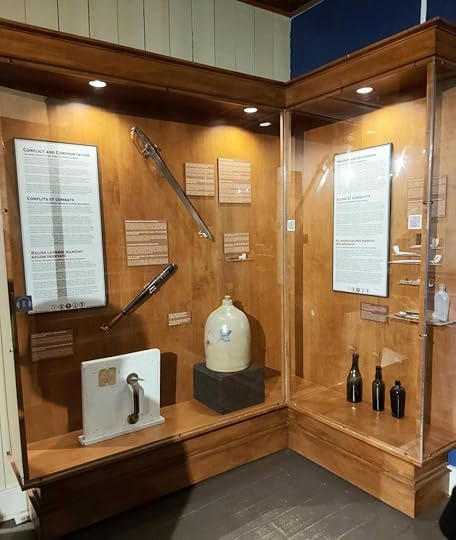
Early artifacts at the Bytown Museum
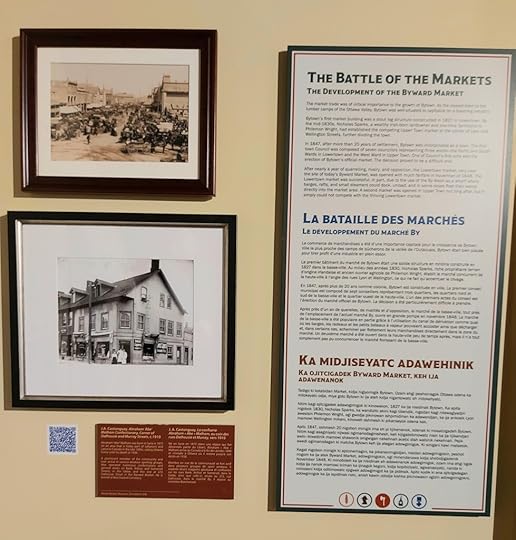
Some of the fascinating history of the evolution of the Byward Market in Ottawa

Historical Society Member, James Powell, (above) delighted the audience with his fascinating account of Lady Aberdeen. As the wife of Governor General John Campbell Hamilton-Gordon, Earl of Aberdeen, Lady Aberdeen and her husband served in Bytown/Ottawa from 1893 until 1898.
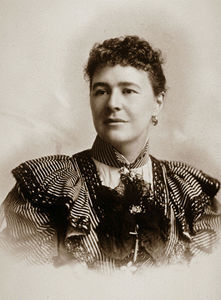
Lady Aberdeen (1857-1939) Ishbel Marie Marjoribanks Hamilton-Gordon
Among her many contributions, Lady Aberdeen helped found the Victorian Order of Nurses and was the first woman to address the House of Commons.
After our tour of the Bytown Museum and the lecture on Lady Aberdeen by James Powell, we gathered together for the awards presentation by Ben Weiss and Jane Waterston.

Award Recipient, Richard Henderson (with Jane Waterston)

Award recipient, Dave Allston, with Karen Lynn Ouellette (past President) (left) and Jane Waterston (centre)
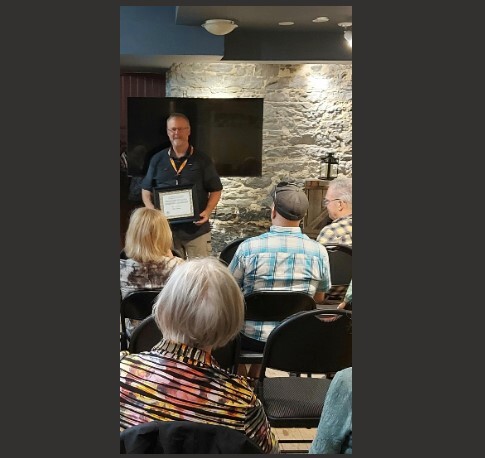
Award recipient, Ben Weiss
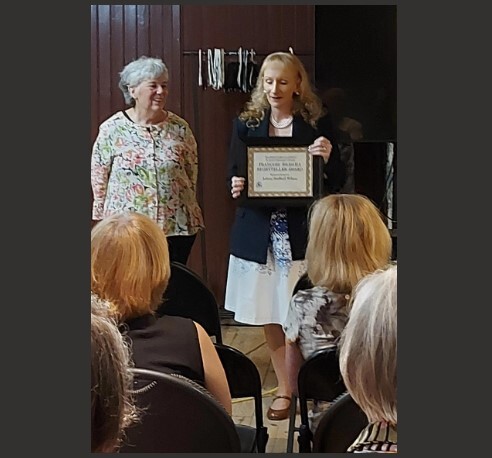
Award recipient, Arlene Stafford-Wilson, (right) with Jane Waterston
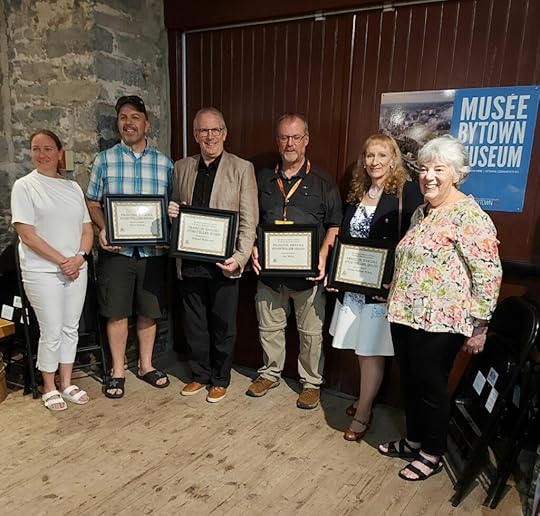
About the Award
“The Historical Society of Ottawa’s “François Bregha Storyteller Award”, was created to recognize individuals who have made an outstanding contribution toward increasing awareness of Ottawa history.”
“The award is named to honour the late François Bregha, former HSO member and creator/author of the History of Sandy Hill website.“

…And so, our special evening concluded, and the memories have been added to our own personal history books of unforgettable moments. It was a night to remember, with some new friends, a look back into the early days of Bytown, delicious refreshments, and all enjoyed among others who treasure their local history………and what could possibly be better than that?
*****
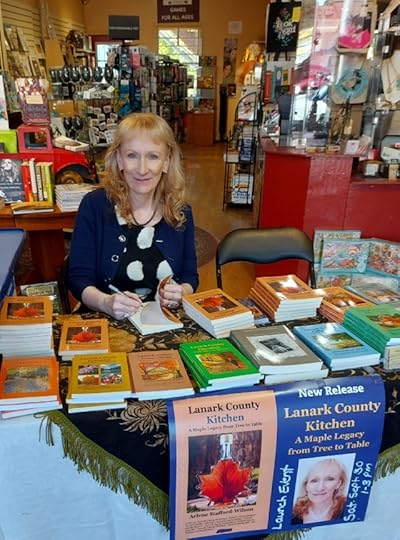
Arlene Stafford-Wilson, Author, Historian
Honorary Life Member: Lanark County Genealogical Society
APG Member: Association of Professional Genealogists,
Lanark County Pioneer Families Humanitarian Award 2023
Website: http://www.staffordwilson.com
Blog: https://arlenestaffordwilson.wordpress.com/
Books: “Lanark County Christmas”, “Lanark County Comfort”, “Lanark County Collection”, “Lanark County Calling” “Lanark County Classics”, “Lanark County Connections”, “Lanark County Calendar”, “Lanark County Chronicle”, “Lanark County Kid”, “Recipes & Recollections” & new in 2023: “Lanark County Kitchen: A Maple Legacy from Tree to Table”
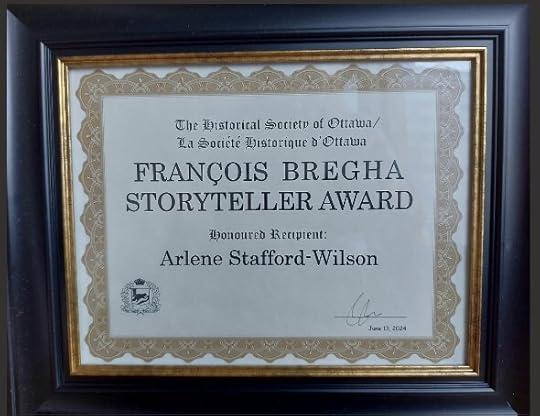
May 8, 2024
‘Witching’ or ‘Dowsing’ for Water

I often wonder what went through our Mother’s mind, when Dad informed her that there was no indoor plumbing in the farmhouse, on the Third Line of Bathurst, where they would be living, after the war.
They purchased the farm from Dad’s aunt and uncle, partly with the help of a Veteran’s Grant, in 1946, when Dad returned from overseas.
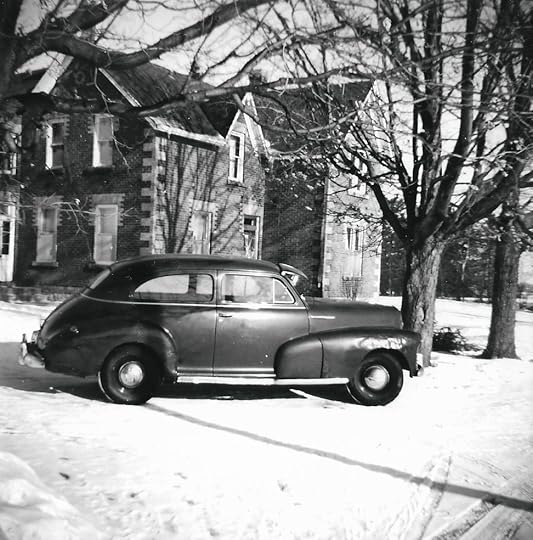
With two babies in diapers, I can’t imagine that my Mother was very happy at the prospect of drawing water from a well, with a hand-pump, a hundred yards from the house. There was a big cement cistern in the basement as well, which collected rain water, but that was just for washing, not drinking.
Water was often in short supply, and almost every year by summer’s end, the well was running dry. When Dad worked for Chaplin’s Dairy, in Glen Tay, he brought water home from the dairy at night, in big metal milk cans, to hold us over, for a while.
Drilling a well was an expensive project to undertake. People paid by the foot, and we’d all heard the horror stories about a neighbour or acquaintance, who had paid for drilling but had not ‘hit’ water in the process.
The practice in those days, back in the 1950s and 1960s, was to hire a ‘Switcher’, or ‘Diviner’, who would walk the property, and use a method called ‘Dowsing’. In fact, this was such a common practice at the time that I recall this technique being called by a few different names: Witching, Switching, and Divining, depending on who you were talking to.
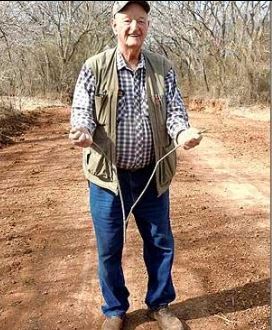
In many cases, a drilling company either had someone on staff, or knew a person with this skill, and brought them along to assist in finding the best spot to drill, where the water was closest to the surface.
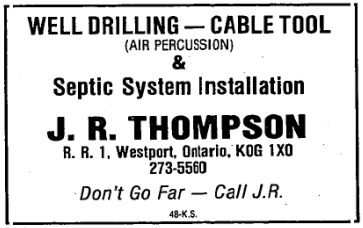
The Thompson brothers, Jerry and Connie drilled our well, and they hired Jack Dowdall from Glen Tay, to walk the land with the apple branch to detect the water.
“I remember when a new well was drilled, and when the men came with the dowsing stick. I can’t recall when they called it – I think a divining stick or rod, but it was used to find water.
I was there, and asked if I could try it. The men seemed amused, but he told me what to do. I can’t remember if I felt anything or not, but when he found the water, it seemed to pull him and the stick almost down to the ground.”
Jackie Stafford WhartonI recall in those days they used a willow branch, or apple branch, and fashioned it so that it had two short ends, and one long end. Willow or apple was used to create the strongest ‘pull’ to the water. I’ve also heard that peach branches, or hazel branches conduct water in the same way.
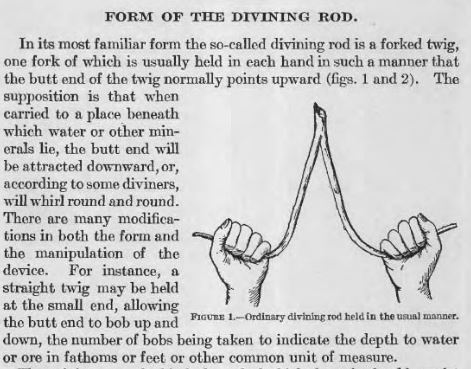
The practice of dowsing, goes back to the 15th century in Europe, where it was used not only to find water, but to detect metals as well.
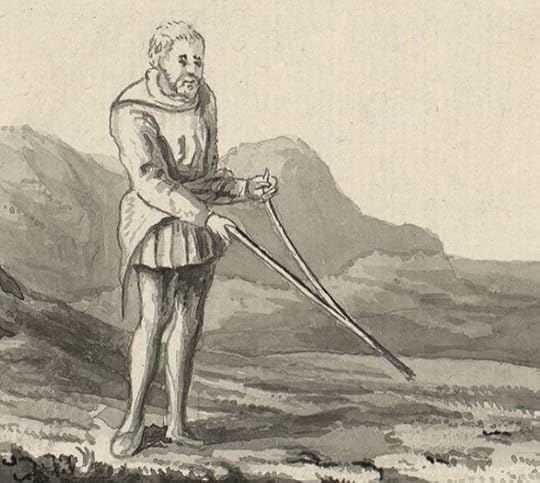
Dowsing or Witching was used extensively during the building of the railroad across Canada, to find drinking water for the crew, along the route.
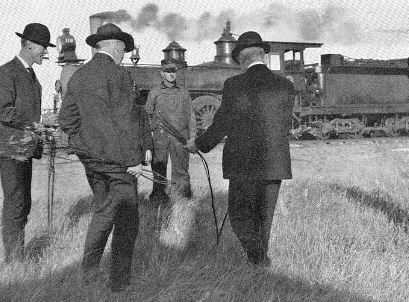
Farmers have used water-witching for generations, to determine the best place to dig their wells, and to find a source of drinking water for their cattle in a pasture.
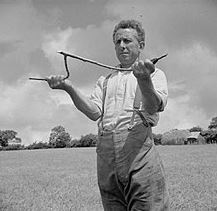
The practice continues to be used today, in some cities in Canada. Metal rods are used instead of the old-fashioned tree branches.
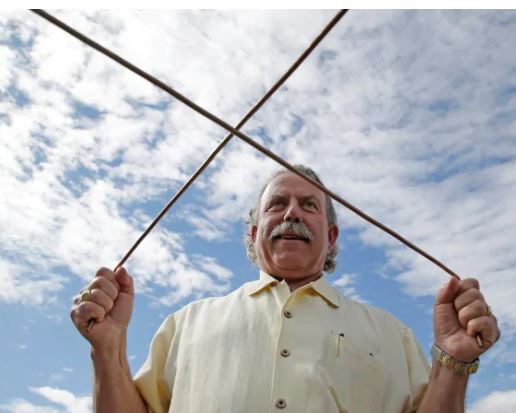
“The city (Ottawa) says it still routinely uses the age-old detection technique, also known as dowsing or water witching.
“Definitely the other technology works more consistently,” said Quentin Levesque, manager of what’s known as the city’s “locates group.”
“Should they have difficulties or troubles using the other equipment, the divining rod is there as well.”
The practice involves walking slowly over an area while holding one of the L-shaped rods in each hand. When the two rods cross, that’s supposed to signify the diviner is standing over water.”
Some Call it ‘A Gift’Can anyone use divining rods, or a willow switch to find water?
Some say it is a gift, and only those with this natural, intuitive, sensing ability can detect water. Some say that it doesn’t necessarily pass from father to son, or down through the family.
Some people claim that dowsing is a psychic ability, and some scoff and say that it is a learned ability, and that anyone can be trained to do it.
Whether it’s a gift, or something that can be learned, it’s still being practiced today by some, to pinpoint sources of water.
Were my parents happy when the well-witcher located the water in our yard, and the Thompson brothers drilled our well? They sure were!
Was it mystical or magical or other-worldly, when our Mother turned on the tap in the old house, and drinking water gushed out for the first time?
I’m sure to her, it was.
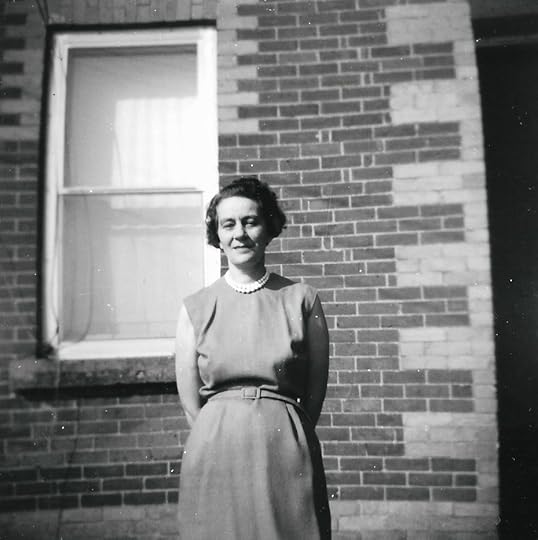
Jerry Thompson’s siblings: Vera (Percy Wills), Gordenia (Winfred Truelove), Marie (Maurice Wills), Gwen (Frank Turnbull), Connell ‘Connie’ (Phyllis North) Thompson, and Murray (Roberta Livingstone)Thompson.
Jack Dowdall’s siblings: Elizabeth (Clarence Donaldson), Violet (Lawrence Dixon), Lillian (William Kirkham), Laura ( Peter Kirkham), Edna (Joseph Kirkham), Mae (James McLaren), Edward (Mildred Foshay), Garnet (Margaret Stewart), William (Eleanor Gordon), George (Pearl Gordon), and Frank (Carmel Kirkham).
‘Meet’ Jerry, Connie and Jack, as they find the best spot to dig a country well, in the story: “Mysterious Ways of the Water Witcher”,
featured in the book – “Lanark County Collection” ISBN 978-0987-7026-78
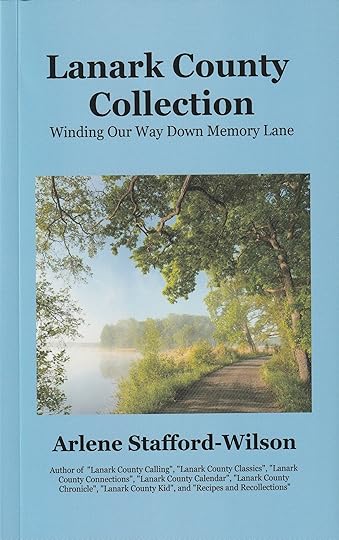
.
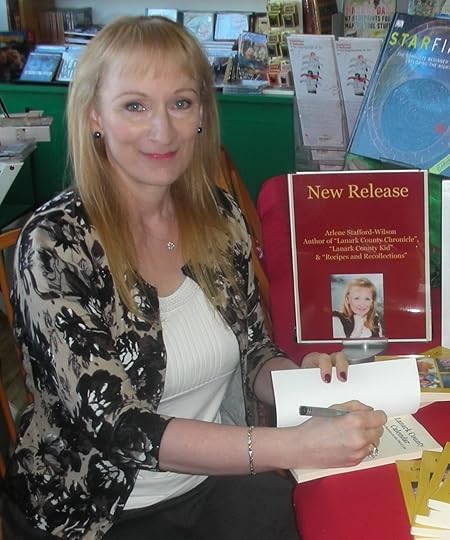
Arlene Stafford-Wilson
Member, Association of Professional GenealogistsHonorary Life Member, Lanark County Genealogical SocietyLanark County Pioneer Families Humanitarian AwardAuthor of : “Lanark County Christmas”, “Lanark County Comfort”, “Lanark County Collection”, “Lanark County Calling”, “Lanark County Classics”, “Lanark County Connections”, “Lanark County Calendar”, “Lanark County Chronicle”, “Lanark County Kid”, & “Recipes & Recollections”, and “Lanark County Kitchen: A Maple Legacy from Tree to Table”http://www.staffordwilson.comMay 2, 2024
Port Elmsley – Drive-In Dreamin’
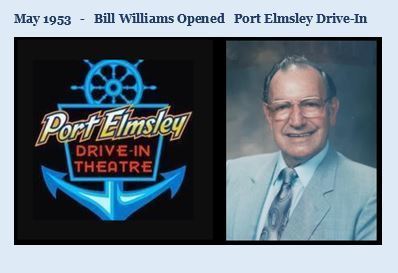
One night long ago, a friend decided that we should save a few dollars, and put a couple of people in the trunk of a car, so they could get in for free, at the Port Elmsley Drive-In Theatre.
I guess we can just chalk this one up to one of many peculiar things that we did as teenagers. Luckily no one was hurt, but for the three bucks they each saved on admission, it was a pretty undignified way to arrive at the movies.
It’s possible that we weren’t the first ones to try that little stunt. After all, the Drive-In had been open for a long time before any of us had ventured there.

It was in September 1952 that ‘The Perth Courier’ ran a short article about a Drive-In being constructed at Port Elmsley. The article stated that it was the first to be fabricated in this district, and it was built by Gordon White of Ottawa for W.J. ‘Bill’ Williams, of Newboro.
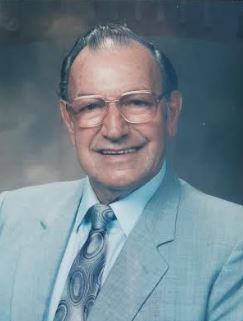
The article went on to say that it would be assembled on a ten acre property, and that the Drive-In would have a capacity for 300 cars. It would feature a design first of its kind in Ontario, where the projector booth would be in a two-story building, nearly 400 feet from the screen. This was a distance that was 150 feet greater than any of the other Drive-In theatres at that time. It was to open the following May of 1953, at a total cost of $75,000. True to their word, they opened on schedule, and called the new Drive-In ‘the Showplace of the Golden Triangle’.
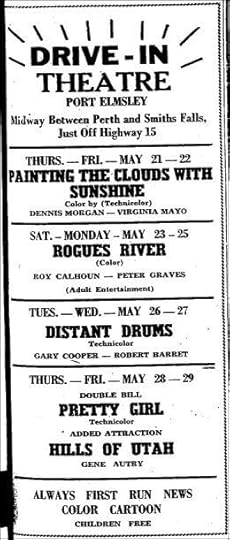
Port Elmsley was indeed a great location for a Drive-In theatre, because it’s situated about halfway between Perth and Smiths Falls. There were always droves of cottagers and tourists staying around Rideau Ferry, and the surrounding lakes in the summer. There were also many residents of the towns and villages nearby, that enjoyed a drive up Highway 15, on a warm summer night, to see some great movies.

Because the Drive-In opened in 1953, many folks had parked in that huge parking lot and viewed many movies on that big screen long before my friends and I ever made it there in the ‘70s. In fact, it was more than twenty years after it opened that it became one of our familiar haunts each summer, as we passed the nights away, under the stars.
Some of us were lucky enough to have gone to the Drive-In as children, dressed in pajamas, playing on the teeter-totter and swings between the first row of cars and the giant screen. As the sun sunk low in the sky, we were having the time of our lives. What could be better than staying up past your bedtime with a whole bunch of other kids, the aroma of popcorn in the air, and watching the cartoons at the beginning of the show?

Every kid knew the words to the concession jingle ‘Let’s all go to the lobby, let’s all go to the lobby, let’s all go to the lobby, to get ourselves a treat.” When we heard that song it was our cue to start heading back to our parents’ cars, because the movie would be starting soon. By the time they played the Chilly Dilly song, about the big, juicy, dill pickles, we were in the back seat, with our pillows and blankets, all ready for the show to begin. Much to the delight of most parents I’m sure, we were asleep by the time the second feature began, and this allowed them some peace and quiet, and time alone – well, almost alone.


We’d usually begin assembling all of our gear during the afternoon. First, we’d pack up a bottle of Windex, and a roll of paper towels, because there was nothing worse than having a big messy streak or some bugs splattered right in the middle of your window.
Mosquito coils were also vital to a relaxing evening. Because of the speaker hanging off of the front window, we weren’t able to close it all the way, so burning a mosquito coil would take care of any of the little pests that flew into the car. If none of the gang had any, we’d have to head out to Canadian Tire on Highway 7, and pick some up before the show. We’d place one of the little green coils on its small metal stand, set it on the dashboard and light it up. Many years later I happened to read on the side of the package that those coils were for outdoor use only. Oh dear!


A couple of pillows and a blanket, were a nice touch, and made movie-viewing a comfy, cozy event. We’d also bring a small flashlight, because nothing was worse for us girls than stumbling around on the gravel path, trying to find our way to the washroom, on a dark, moonless night; especially right after watching a scary scene in a horror movie. That just didn’t work for us. Sometimes we’d bring a roll of t.p. from home, in case they ran out, which happened once in a while during the all-night movie marathons.

I still recall the crunch of the gravel, as we slowed down to enter through the gates, into the Drive-In, and began scouting for a good spot. A good spot to us was front-row-centre, and enough space for the three cars to park side by side, so that we could socialize. We also had to make sure that all three speakers worked, so we would pull into the spots and test the speakers, otherwise we’d have to move all three cars to a new location, maybe a row behind. Of course every row farther back that you were you would have to contend with people getting in and out of their cars in front of you or turning on their cars to clear their windows because they were fogged up for some reason. So, the best real estate in the lot was the front row, right in the center of the screen, and if we went early enough the best spots would be ours.
I think the lads liked having spots near the front, not just for the sake of the movie, but so that their cars were together, and very visible in the front row. There’s no denying that they all had sweet cars. Those three cars managed to get some looks, touring around town, and had been known to burn up more than a little rubber on the quarter mile runs down Roger’s Road.
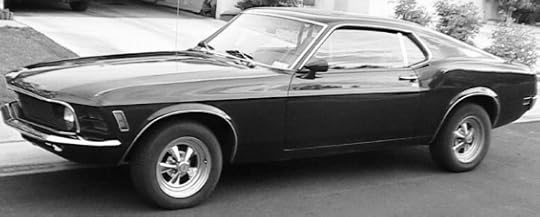

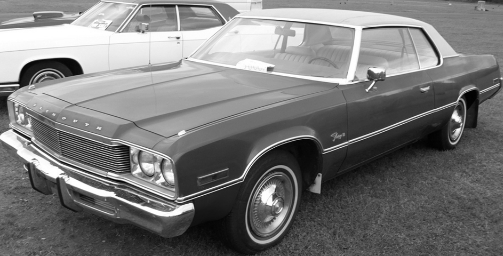
The warm summer air was filled with strains of Foreigner’s ‘Hot Blooded’, or Led Zeppelin’s ‘Stairway to Heaven’, and typically, a little bit of our favourite space-cowboy, Steve Miller, singing “The Joker’; a song that you could say became a symbol of the times. Some have said that it was an era of music like no other, before or since, and the sounds of our generation could be heard throughout the parking lot of the Drive-In, on those sultry summer nights, in Port Elmsley.
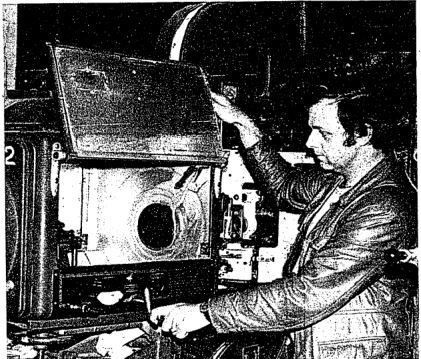
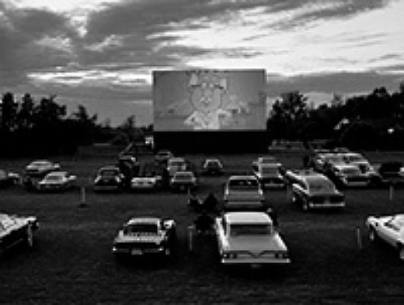
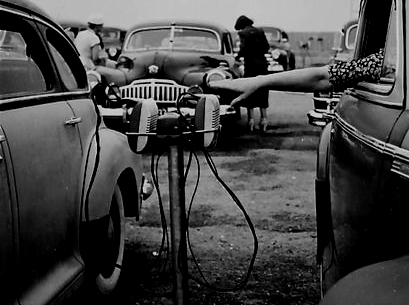
As the sun slid down lower in the sky, the horizon glowed, first in a dusty pink, then a soft purple. There was always one car that began honking their horn, because they believed that it was dark enough to see the movie. After a minute or two, more people started to honk, and then shortly after that the show would begin.
One of the things that we enjoyed the most were the ‘Dusk to Dawn’ shows, where the first movie would begin at dusk, and the movies would continue all night, until the early morning, when it became too light to see the picture on the screen. The movies were played back to back, and were often horror films like ‘The Exorcist’, or ‘The Omen’, or ‘Jaws’. I recall one night that my friend and myself, even after having consumed large quantities of pop, did not want to use the washroom, just in case that giant crazy shark ‘Jaws’ had somehow compromised the plumbing system out in Port Elmsley. We just weren’t taking any chances.
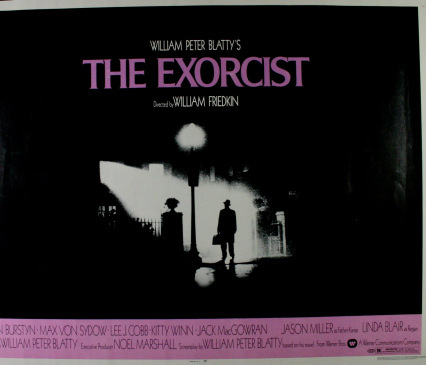

We saw many nights come and go in Port Elmsley. There were some beautiful, sleek, muscle cars in those days, parked row after row, paint glistening in the moonlight. We made numerous trips to the concession stand, in an attempt to fill our unquenchable teenage appetites. We even had a few scary trips in the dark, giggling on our way to the washroom and back. We screamed a few blood-curdling screams, as did some of the folks in the neighboring vehicles one evening, I recall, as the character Jason appeared in his hockey mask in the thriller ‘Hallowe’en’.
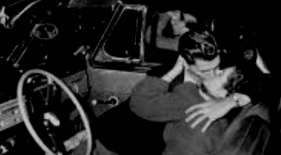
Today, the Port Elmsley Drive-In is one of a handful of drive-ins still operating in Ontario. Leave it to the folks in Lanark County to know a gem when they see one, and to continue to go out, and enjoy movies, under the stars. I hope that in the future that the little kids in their p.j.s, young people, and not so young people, will take the time to visit the drive-in and have as much fun as we did. Take a trip to Port Elmsley and make some of your own memories!
…….
In its heyday, Port Elmsley had many residents, and some of the family names that were common in that area were: Armstrong, Taylor, Stone, Hunter, Weatherhead, Best, Couch, Wicklum, Weekes, VanDusen, Seabrook, Shaw, Sherwood, O’Hara, Moore, Dudgeon, Lavender, Findlay, McTavish, McVeety, Beveridge, and Clements.
…..
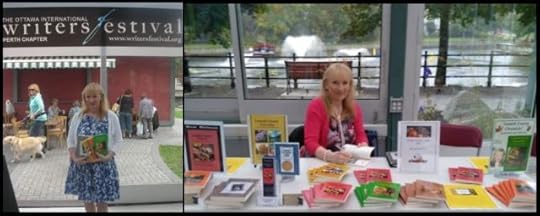
Member, Association of Professional Genealogists
Honorary Life Member, Lanark County Genealogical Society
Lanark County Pioneer Families Humanitarian Award
Author of : “Lanark County Christmas”, “Lanark County Comfort”, “Lanark County Collection”, “Lanark County Calling”, “Lanark County Classics”, “Lanark County Connections”, “Lanark County Calendar”, “Lanark County Chronicle”, “Lanark County Kid”, & “Recipes & Recollections”, and “Lanark County Kitchen: A Maple Legacy from Tree to Table”
Stories about the Port Elmsley Drive In:Spend a hot summer night at the Port Elmsley Drive-In, and meet some of the fascinating people, with memories from former owner, Jan Stepniak, and recollections from Laura Williams, daughter of founder and owner, Bill Williams. Read their accounts of those special nights under the stars, and what really happened behind the scenes of this beloved local gem, in “Lanark County Collection: Winding Our Way Down Memory Lane”
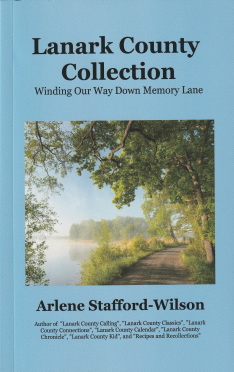

The story “Dusk to Dawn in Port Elmsley” is part of a collection of stories in the book “Lanark County Chronicle”
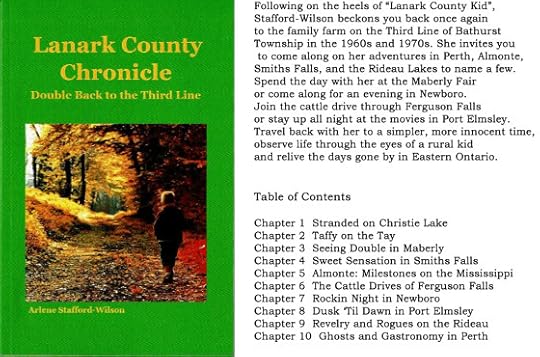
April 30, 2024
Lanark County Dance Halls 1950s, 60s & 70s
First kiss, first drink, maybe even a first love, were some of the memories made at the old style country dance halls in Lanark County in the 1950s, 60s and 70s. Close to home, these community halls opened their doors on the May long weekend, and became the backdrop for cottage crushes and summer romances. With wooden floors polished to a high shine, and the snack-bars stocked with crowd-pleasing favourites, local bands entertained the crowds into the wee hours.
Some were neighbourhood musicians, and many were bands from out of town, but most used a single microphone and one or two small amplifiers. Parking lots became passion pits, and offered privacy for underage drinking, and occasional brawls.
Music echoed across the big lakes and rivers, keeping cottagers awake, and causing parents to wonder what was going on down at the dance hall. Whether you preferred country, big-band or rock and roll there were venues to suit every taste and style.

Bill Hannah and the Nightingales
Bill Munro and his Country Rockets
CFRA Happy Wanderers: Ken Reynolds, Ward Allen, Bob King, Vince Lebeau, Lynn Strauff, Marie King
Country Harmony Boys
Country Hoppers: Garry ‘Gizz’ Watt, Fred ‘Pappy’ Ryan, Paul ‘Hiker’ Gurry, Larry ‘Dooley’ Protheroe
Country Rhythm Kings
Don Gilchrist and his Dancers
Family Brown: Tracey, Lawanda, Joe & Barry Brown, Dave Dennison, Ron Sparling
Fred Paquin’s Orchestra (featuring Don Cochrane)
Jerry Badour and His Westernaires
Kenny Jackson’s Valley Cruisers: Harry Adrain, Raymond Donaldson, Gary Barr
Lee Miller’s Orchestra
Lockwood’s Orchestra
Mac Beattie and the Melodiers: Reg Hill, Garnet Scheel, Gaetan Fairfield, Bob Whitney
Mallen’s Melodiers
Mississippi Ramblers
Mississippi River Boys
Riders of the Southern Trails
Ron McMunn and his Country Cousins
Symington’s Orchestra
Tex Montana’s Cowboy Band
Top Hats
Travelons
Valley Ramblers
Wilson Sisters
…and the dance halls where they entertained us:Antler Lodge
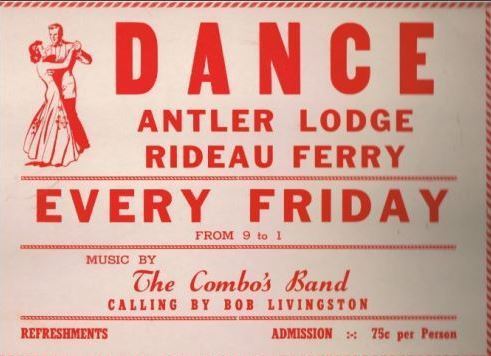
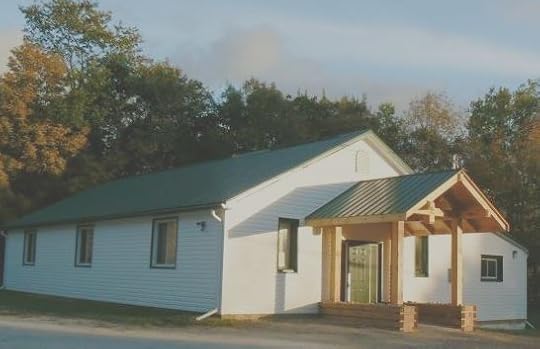
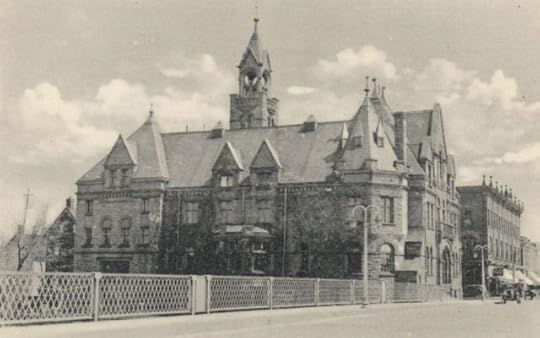

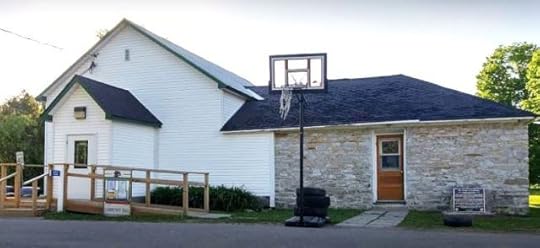


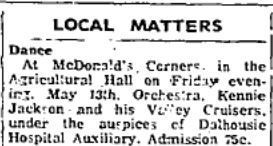
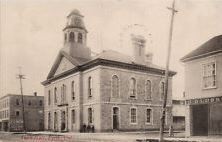



 Westport Scott’s Ballroom
Westport Scott’s Ballroom

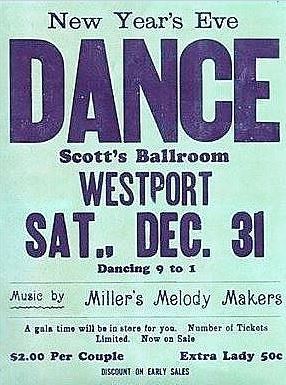
Don White: “The Mississippi River Boys started playing in White, in 1956 or 1957. The dances in White were every Saturday night from late April or early May, depending upon the weather, and running until the end of deer hunting. The season finished with the Deer Hunters Ball. Back then you couldn’t play past midnight on Saturday so the dance was from 9 to 12. I remember working the door (25 cents admission) starting in 1958. I began playing drums with the band in Lanark, on New Years Eve, 1958.”
Mississippi River Boys at the White Hall, Highway 511, mid- 1960s (below) photo: courtesy of Don White
Left to Right: Ed White, Don White, Doug White, George Fyfe, Walter Cameron, Eleanor White
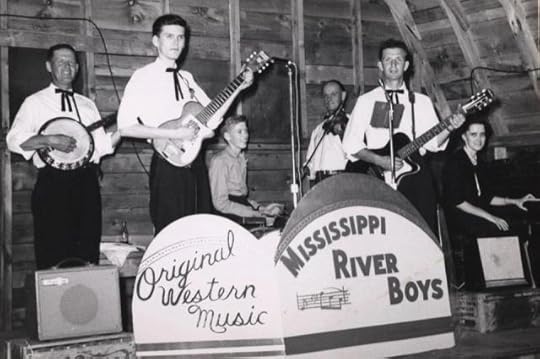
Take a trip down memory lane, back to the old style country dance halls, and the folks who kept us dancing until the wee hours, in the story called “Antler Lodge: Dosey-Doe Along the Rideau” from the book “Lanark County Connections – Memories Among the Maples”

.
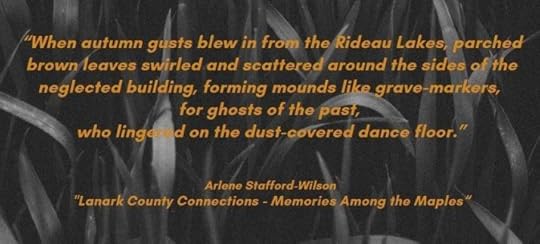
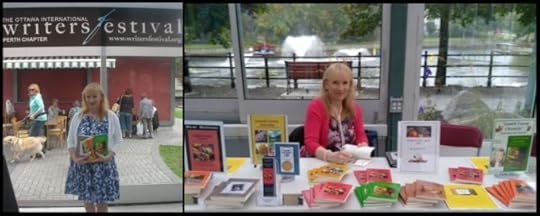
Arlene Stafford-Wilson
Member, Association of Professional GenealogistsHonorary Life Member, Lanark County Genealogical SocietyLanark County Pioneer Family Humanitarian AwardAuthor of : “Lanark County Christmas”, “Lanark County Comfort”, “Lanark County Collection”, “Lanark County Calling”, “Lanark County Classics”, “Lanark County Connections”, “Lanark County Calendar”, “Lanark County Chronicle”, “Lanark County Kid”, & “Recipes & Recollections”, and “Lanark County Kitchen: A Maple Legacy from Tree to Table”(photos of Antler Lodge, used with permission – Graeme Hoatson Beattie)April 29, 2024
Chaplin’s Dairy in Glen Tay
Whenever I saw the big white and pink Chaplin’s Dairy truck pull into the yard, I had only one thing on my mind; and that was their delicious chocolate milk. It came in small pint-sized glass bottles, and had a round, waxed cardboard cap on the top to seal it in. The cap had a little tab, so that you could pull it off of the bottle, and the pint bottle was the perfect size for small eager hands. After the cap was off, I was just seconds away from tipping the bottle and tasting the richest, creamiest chocolate milk ever produced.
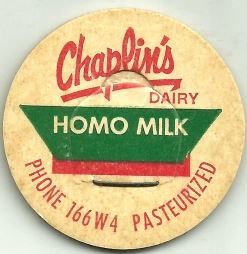
Our Dad worked for Chaplin’s Dairy for decades. He drove one of the big pink and white trucks, and had a regular ‘route’ of customers in Perth. He used a big, black, metal carrier to transport milk from the back of the truck to the customer’s front door. The carrier had eight slots, and each slot held a quart bottle of milk. He also had a book of order slips. It was a small, thick pad of paper about three by six inches, stapled together at the end. There was a top sheet that was numbered, a small sheet of carbon paper under that, and a blank sheet at the bottom. On the top copy, Dad wrote the customer’s name, address, and what they had ordered, along with the total price and that was the customer’s copy. Because each order was written on top of the sheet of carbon paper, the Dairy had a carbon copy underneath for their records.
Once in a while Dad would bring me to the Dairy and I was fascinated to see the many steps that the milk went through in order to end up on someone’s table. It was fun to sit in the big truck so high up, and the ride was very different from our car at home. The truck bounced up and down a lot more, and made a lot of noise, as we drove down the lane, and up the third line toward Perth. It was neat to look outside, and see how much lower the other cars were on the road. Every time we’d go over a bump or hill the truck would bounce again, and of course there were no seat belts in those days, so it was quite exciting.
We’d drive along until we could see Nick and Doreen Webber’s house at the corner, and we’d begin to slow down. Just a bit past Webber’s house we turned right, and Chaplin’s Dairy was a small building on the right side of the road, just up from the corner at Glen Tay.
We’d park the truck, and I would follow Dad into the Dairy. As soon as he opened the door I could see all of the steam in the air. It was really, really, humid. The inside of the building was grey and concrete and the floor was always wet. Sometimes we’d see one of the Chaplin brothers Cameron or John, and they always wore big rubber boots and the steam rose up all around them.
Because the milk came in glass bottles in those days, a lot of the steam was produced from the big machine that they used to sterilize the bottles. When the customers were finished with their milk, they would rinse their bottles (hopefully!), leave them on their doorstep for Dad, and he would bring them back to the Dairy that evening. John or Cameron Chaplin would take the empty bottles and put them through the bottle washer. The bottle washer washed, rinsed, sterilized, and then rinsed again, so the bottles were sparkling clean and ready for the next batch of milk.
The next machine filled the bottles, then capped them with the little waxed cardboard caps. There was a large room toward the back of the Dairy, and that was a cold storage room, where the freshly bottled milk was kept. Most of the time when I visited I saw them bottling homogenized, 2 per cent, skim, and chocolate milk. Sometimes, one of the Chaplins, would hand me a pint bottle of chocolate milk, right off of the filling machine. I would gladly accept, and thought to myself that if Mother was here she would say that I was going to spoil my supper. Dad never said anything though, because he knew how much I loved Chaplin’s chocolate milk.
Chaplin’s Dairy was a family business. The dairy was started by Delbert Chaplin in the early 1900s, and his brother Edgar Chaplin also worked in the business. The Chaplin family owned a large 300 acre farm at R.R 4 Perth and Delbert demonstrated his ingenuity by setting up a method to process their milk from their Holstein herd. At first he operated the business from their farm, but later in 1935 he built the Dairy building at Glen Tay corners.
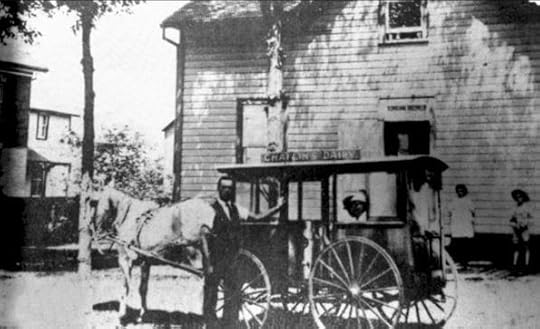
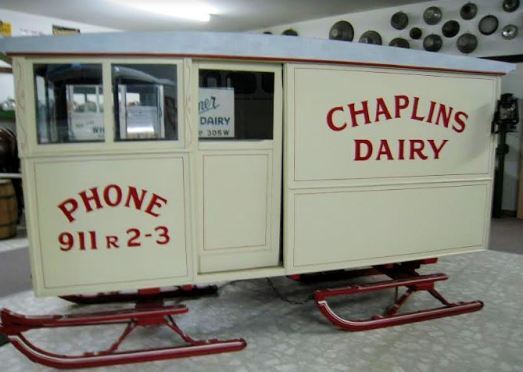
When Chaplin’s Dairy began to deliver milk from the new location at Glen Tay, the quarts of milk were just 5 cents each, and it was delivered by horse and wagon. The milk was not bottled at that time but was distributed to the customers from a large tank at the back of the wagon. The customer would leave a container on their front step or front porch, and Delbert or Edgar would ladle the milk out of the larger can with a pint or quart measure.
The Chaplin farm was producing an average of 3,000 quarts of milk per day and John, Cameron and their brother Don processed the milk and delivered it in the Perth area.
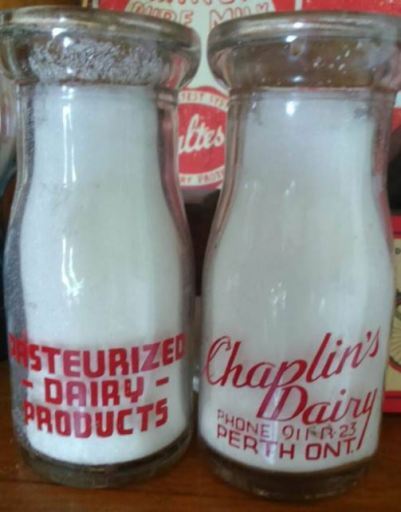
The demand for their milk increased, and they expanded, and made arrangements to have five neighbouring farms supply their business with additional milk. They were also producing chocolate milk and buttermilk at that time. They made butter as well, but only to supply their own families and it wasn’t for sale to the public.
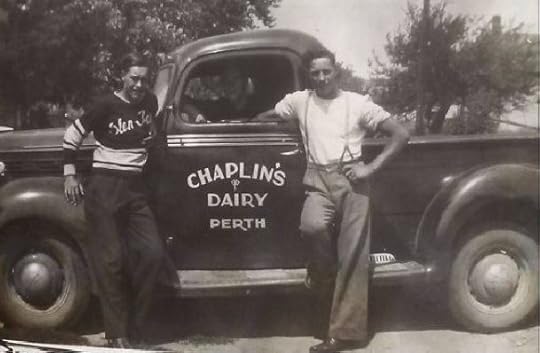
By 1945 the sons had taken over the dairy farm and Don took on the responsibility of managing the farm, but their father continued to be active at the Dairy. They continued to expand their business and operated for many decades. They expanded their product line to include grape juice and orange juice.They were successful and respected in the community and were known for their high quality products throughout the Perth area.
Memories of Chaplin’s Dairy:Tim Stafford: ” When I turned nine, Mom told Dad that she could no longer put up with me on Saturdays because of my bad behavior. That’s the ‘how and why’ of me working with Dad, on the milk truck for Chaplin’s Dairy.
I wasn’t much help at first, but he gave me fifty cents and a chocolate bar purchased at McGlade’s service station, on Gore Street.
Later, when I got my driver’s license, John Chaplin hired me and another high school student, Don Lindsay, to do his milk route, and the Christie Lake cottage route, while he covered the other routes and the ‘inside’ workers for summer vacations.
We were making $25.00 a week, plus we were expected to eat at the restaurants we delivered to on a rotating basis. The daily meal was paid for by Chaplin’s Dairy. John Chaplin’s favourite restaurant was Wong’s Chinese, but Don and I preferred ‘The Bright Spot’, where Muz MacLean, Hillis Conroy’s son-in-law worked. We usually ordered grilled cheese, french fries, and cokes.”

Roger Stafford: “I am not positive, but I believe I was about 12 when I started working Saturdays and summers with Dad on the milk truck. The first Summer I worked with Dad, our brother, Tim, was working with Grant or Gary Chaplin.
They were delivering to the stores and restaurants in Perth, and to summer camps and cottages. They drove to Christie Lake to deliver to Cavanagh’s (general store) and the Lodges (Norvic Lodge and Arliedale Lodge) . I believe Tim had been Dad’s helper on the milk truck, prior to me starting to work with Dad.
We used to be at the dairy by 7:00 a.m., and usually got home between 17:30 and 18:00 in the evenings. When I first started with Dad, we delivered milk out of the back of a pickup with a tarp over the glass bottles to protect them from the sun and cold. Milk was 23 cents a quart bottle, and 25 cents for chocolate milk. We also had pints and half pints in glass bottles. Whipped cream and buttermilk were also carried on the truck. It was not long after I started that we used an enclosed truck to deliver out of. It was much easier, but it had no air conditioning, and a piss-poor heater. When I worked six days a week in the summer, I earned $6. for the week.”
In 1970 Don decided to sell the farm and a few years later in 1974 John and Cameron made the decision to stop processing the milk themselves and just be distributors. In total, John worked for 42 years in the business and Cameron for 30. At that time Chaplins were one of the last small dairies that still processed their own milk. They began to sell milk for Clark’s Dairies in Ottawa. John felt that there were too many changes taking place at that time and that the cost would be too prohibitive to continue processing their own milk.
The milk industry in the 1970s was changing from glass bottles to paper cartons,although most customers preferred the taste of milk in glass bottles. The process of returning and washing the bottles was becoming too time consuming, and too expensive. The federal government was also insisting that businesses use the metric system. This conversion would have meant purchasing new equipment because their milk was sold in pints and quarts, and they would have to begin selling in litres.
At the point in time when John and Cameron decided to sell the business, they had 1,000 customers, and a modern fleet of trucks, doing 12 runs per day, with four salesmen. They also offered a complete line of dairy products which included cottage cheese, eggs and also several types of juice. Their last delivery was made by Cameron, on Sept. 17, 1977 and their milk at that time, was 65 cents a quart.
Chaplin’s Dairy was sold that year to Bill McConachie. Bill was formerly a driver for many years who brought the milk from Ottawa. His plan was to begin delivering milk to Smiths Falls, to increase his market.
It’s likely difficult for the younger generation to believe that milk was delivered door to door each day, or that it had no expiry date stamped on the bottle. The milk was fresh from the cow either that day, or the day before, processed at Chaplin’s Dairy, and delivered right to your door step. There was no need for an expiry date. It’s also interesting that they managed to have a pretty successful recycling process of sterilizing the bottles and getting them back on the trucks by the next morning. That was all accomplished without ‘blue bins’ and recycling plants.
Did the milk taste better in a glass bottle? Yes, it did; and anyone who has drank it from a bottle will tell you the same thing. We certainly drank enough of the stuff at our house to offer an opinion on that. One of the benefits of having your father work as a milk man is that he brought home enough milk for the family, each night, in his milk carrier. When you are raising five children, that’s a lot of milk. We were fortunate to have had such fresh milk each and every day and we never ran out.
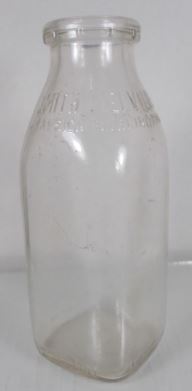
Although the work wasn’t easy, I believe that Dad enjoyed his customers in Perth, and the quick chats had each day. Whenever Mother and Dad shopped at the IGA on Wilson Street, customers from his milk route would often come up to say ‘Hello’, and exchange a few words. Dad was well liked, and at Christmas his customers showered him with gifts. He received many, many boxes of chocolates, packs of cigarettes and one and two dollar bills in lovely Christmas cards. He was always late getting home Christmas Eve, and part of the reason was that his customers took a few extra minutes to wish him a Merry Christmas, and give him their gifts.
We were fortunate to have grown up at a time when there were family businesses, producing high quality products, and selling them door to door. At one time we had a milk man, an egg man- (Mr. Greer), and a bread man, delivering right to our door.
As the years passed by, many of the small family businesses have closed down, one by one, and in many cases our products are produced far away by people we don’t know. There are dates stamped on the products now telling us when they are destined to ‘expire’. We often have no idea what processes are used to make some of the things that we eat, and so we purchase them on faith alone. Gone are the days when we always knew what we were eating, and even knew the people that made the goods.
Now, we are left with the memories of Chaplin’s, our small, local dairy in Glen Tay. It was a place where we could stop by for a visit and be greeted by John, Don, or Cameron in their big rubber boots, clouds of steam rising all around them. With a big smile they’d pluck a pint of chocolate milk off of the line, and hand it to a little girl from down the road. Their products were made with pride and care, and they were confident that their customers would be satisfied. For years, Chaplin’s Dairy was a well known business in our community, and their products were enjoyed in Perth and area homes for many, many decades.

Arlene Stafford-Wilson
Member, Association of Professional GenealogistsHonorary Life Member, Lanark County Genealogical SocietyLanark County Pioneer Families Humanitarian AwardAuthor of : “Lanark County Christmas”, “Lanark County Comfort”, “Lanark County Collection”, “Lanark County Calling”, “Lanark County Classics”, “Lanark County Connections”, “Lanark County Calendar”, “Lanark County Chronicle”, “Lanark County Kid”, & “Recipes & Recollections”, and “Lanark County Kitchen: A Maple Legacy from Tree to Table”(excerpts from ‘Lanark County Kid: My Travels up and down the Third Line’)

